How AI Is Changing SEO in Multifamily Marketing
The rules of search marketing are changing under our feet. Imagine a prospective renter asking ChatGPT (not Google) to recommend the best apartment community in your city. Will your property even appear in that AI-generated answer?

In an era of generative AI and fragmented search behavior, multifamily marketing executives face tough questions. Can you trust algorithms with your brand’s story? Who holds authority when AI can generate content on the fly? And with renters finding apartments via TikTok, Instagram, or voice assistants, how do you measure marketing impact when traditional Google Analytics might not capture the whole picture?
These aren’t hypothetical questions; they’re strategic dilemmas CEOs, COOs, and Marketing Directors in the multifamily industry must contend with right now.
Welcome to the new SEO reality, where Google is still critical but no longer the only game in town.
The Rise of Search-Everywhere Optimization
Not long ago, “SEO” was practically synonymous with “Google SEO.” Today, that’s no longer the case. Renters (especially younger ones) increasingly turn to alternative discovery platforms, forcing multifamily marketers to optimize for search everywhere, not just Google.
In fact, Google’s own research found that nearly 40% of Gen Z prefers using TikTok or Instagram for search instead of Google. Instagram has now risen to the second-largest search platform globally, reflecting a dramatic diversification in search behavior. From social media hashtags to YouTube tutorials to Reddit threads, people are finding information (including apartments and local recommendations) in many places that never show up in Google Analytics.
To put things in perspective, Google still leads in traditional search engine usage, but even that dominance is starting to waver. In 2023, Google’s search engine market share dipped below 90% for the first time in a decade.
And if you broaden the definition of “search” to include all platforms, some analyses peg Google at only about 18.8% of global search activity. The rest is happening on platforms like TikTok, Instagram, YouTube, Amazon, Snapchat, voice assistants, and now AI chatbots.
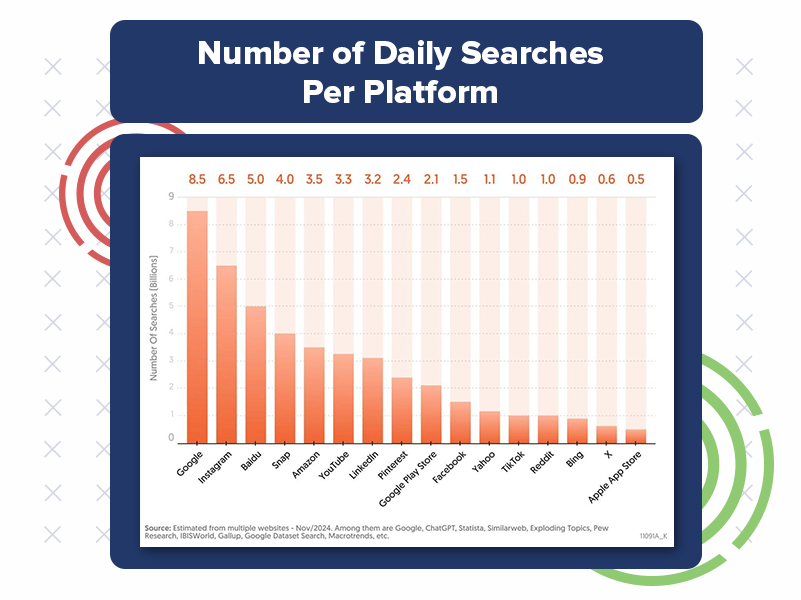
In other words, SEO strategies can’t rely solely on Google anymore. This is the advent of “search-everywhere optimization,” where the goal is to make your content visible wherever your audience might be searching.
For multifamily marketers, this shift is huge. Prospective renters might discover your property through an Instagram neighborhood tour, a TikTok video of your amenities, a question answered on Reddit, or a query to Alexa or Siri. They might even ask ChatGPT or another AI assistant for “the best pet-friendly apartments in {City}” and get an AI overview of options.
If your marketing strategy is focused only on ranking in Google’s search results, you risk missing swaths of these prospects. The “new SEO” means embracing a fragmented ecosystem and crafting content that’s optimized for multiple search engines and social platforms.
Practically, this could involve:
- Social SEO: Optimizing your social media profiles and posts with keywords (yes, people search within social apps). For example, ensuring your Instagram captions include local neighborhood terms or amenities can help you appear in Instagram search results. TikTok SEO is also a real thing; savvy brands are including spoken keywords in their TikTok videos and text overlays so that TikTok’s algorithm surfaces them.
- Visual Search: Recognizing that renters often search visually. Instagram and TikTok are essentially visual search engines. A strong visual content strategy (high-quality photos, short videos, virtual tours) optimized with the right tags and descriptions can capture those searchers.
- Alternative Platforms: Don’t forget platforms like YouTube (for longer video content), Pinterest (for apartment decor inspiration searches), and even voice search on smart speakers. The rise of voice search is notable — 58% of consumers have used voice search to find local business information, like nearby apartments. If someone asks a voice assistant about your property, will it have the information (and reviews) needed to recommend you?
The bottom line: your multifamily marketing plan must treat SEO as broader “search everywhere” optimization. It’s about meeting potential renters on their terms, whether that’s a Google query, a social media search, or an AI chatbot conversation. The future of SEO lies in embracing this multi-platform reality and ensuring your brand is present and persuasive across all of it.
Hype vs. Reality: AI-Driven Search Traffic in 2025
Of course, no conversation about the future of search is complete without talking about generative AI tools like ChatGPT. Over the past two years, we’ve heard countless predictions that AI chatbots will revolutionize search and siphon traffic away from traditional search engines. Some multifamily marketers might be wondering if “ChatGPT SEO” is now a thing, and whether they should be optimizing content for AI referrals. The truth requires cutting through some hype.
There’s no doubt that ChatGPT’s usage has skyrocketed. OpenAI’s ChatGPT reached over 400 million weekly users by early 2025, an astonishing adoption rate. And indeed, websites have started seeing traffic coming from ChatGPT’s citations. In fact, referrals to publisher websites from ChatGPT have grown eightfold in the span of six months.
But before we declare the death of Google, let’s look at the actual impact: even after an 8x surge, AI-driven search traffic still accounts for less than 0.1% of total visits for those sites.
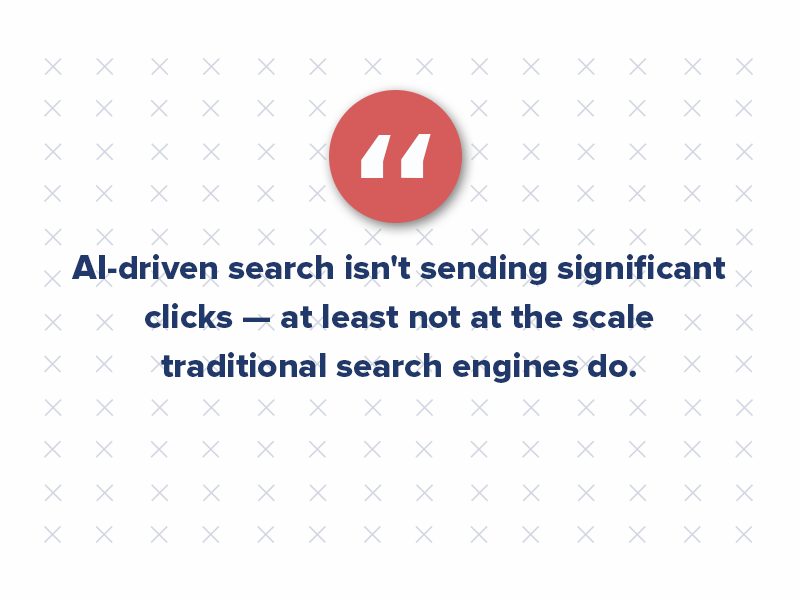
In other words, 99.9% of traffic is still coming from traditional channels. ChatGPT might be sending a trickle of extra visitors, but it’s nowhere near replacing Google, direct traffic, or even social media referrals in volume.
ChatGPT’s popularity doesn’t (yet) equal massive web traffic. Despite the buzz, ChatGPT referral traffic is still a tiny slice of the pie for most websites.
For example, fourteen leading news publishers received a combined 3.5 million visits from ChatGPT in one month — sounds great, until you realize those sites had 3.8 billion total visits that month. That’s why AI-driven search made up under 0.1% of traffic. This gap between hype and reality is critical as you plan your 2025 SEO strategy.
Yes, you should watch ChatGPT and similar AI platforms, but don’t bet the farm on them just yet. Why is AI referral traffic so small despite the huge usage of tools like ChatGPT? The fundamental issue is user behavior. Generative AI tools often answer questions directly on their own platform, without sending the user to an external site.
If a renter asks ChatGPT, “What are some good apartments in Downtown Seattle?”, ChatGPT might generate an answer drawing from various sources (and cite those sources). The user gets a convenient summary right there in the chat interface. They might not feel the need to click through to every source cited.
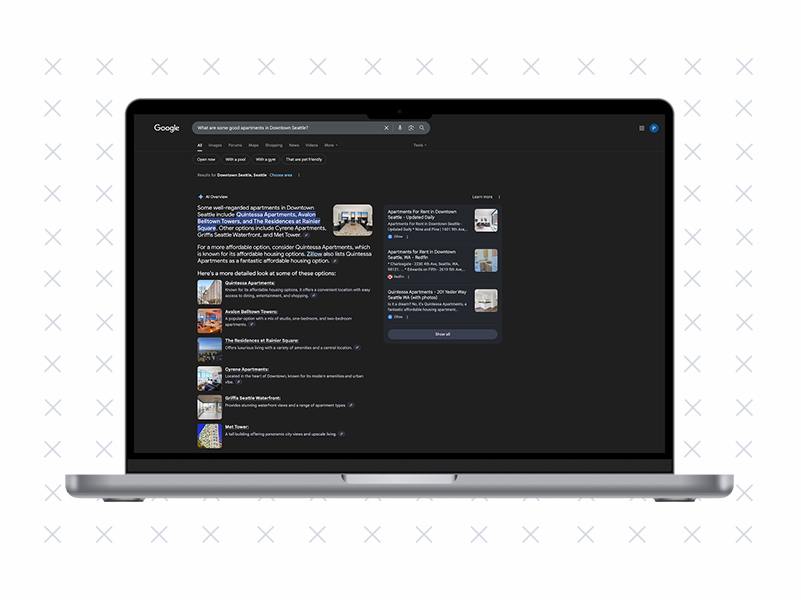
In essence, AI-driven search encourages “zero-click” results even more than Google does — the answer is delivered in full, which is great for user convenience but not so great for your website’s traffic. Publishers and brands are essentially training AI models with their content, and not always getting the click credit back.
So what does this mean for you as a multifamily marketer? Calibrate your expectations. Don’t ignore AI search (it’s growing fast, and those numbers could change), but don’t panic either. Google is still the primary source of SEO traffic for now, with social and direct channels also crucial. Consider AI chatbots as additional discovery tools — if ChatGPT or Bing Chat can cite your content, it’s another way to build brand awareness.
For instance, an AI answer might mention your property or quote your blog post about renting tips, planting a seed in the user’s mind. But that click may never show up in your analytics, so success might look different (brand mentions, not just site sessions).
A savvy SEO strategy keeps one foot grounded in reality and one foot testing the waters of emerging tech. Continue to invest in traditional SEO and content marketing strategies that drive organic traffic (more on that below), while also experimenting with optimizing content for AI. This could mean ensuring your content is well-structured and factual so AI models find it credible and worth citing. It might also mean using schema markup or FAQs on your site that could be pulled into AI answers.

Just remember: AI-driven search is a supplement, not a substitute — at least for now. The worst thing a marketing leader could do is chase the shiny object (AI) at the expense of the proven channels that still deliver 99% of your leads.
Smarter or Just Louder? Generative AI’s Impact on Content Quality
One of the promises of generative AI is that it can make content creation lightning-fast. Thanks to tools like ChatGPT, marketers can now produce blog posts, social captions, and even video scripts in a fraction of the time it used to take.
But this raises a pivotal question: Is generative AI making content smarter, or just making the internet louder? Quantity has skyrocketed — quality, not so much. As an executive overseeing multifamily marketing, it’s critical to discern whether AI is actually improving your content strategy or just adding to the noise.
Let’s face it: AI-generated content has exploded in recent years. It’s never been easier to spin up 1,000-word articles on any topic under the sun. Need 50 variations of a property description for SEO? An AI can give you that in seconds.
But there’s a catch: AI can only regurgitate what’s already out there. As one industry expert aptly asked, is AI content just repackaging existing information?
In many cases, yes. Generative models predict plausible text based on their training data — they don’t generate new knowledge. If everyone in your market is using the same AI tools trained on the same data, you’ll all end up publishing eerily similar, surface-level content.
The result? A deluge of blogs and pages that add volume but not unique value. Content gets louder, but not smarter. On the other hand, original research and insights are the antidote to AI noise.
When your brand produces content based on unique data — say, a proprietary survey of renters, an analysis of your leasing trends, or a case study from your portfolio — you’re creating something AI can’t replicate (at least until it trains on your content!).
Original, data-driven content marketing gives you fresh statistics, novel perspectives, and specific expertise that stand out in search results. It establishes you as a thought leader with true authority, rather than just another content mill.
While generative AI in marketing can boost efficiency, original research remains the key to true authority. In other words, to build brand authority in SEO, you still need human intelligence and creativity behind your content.
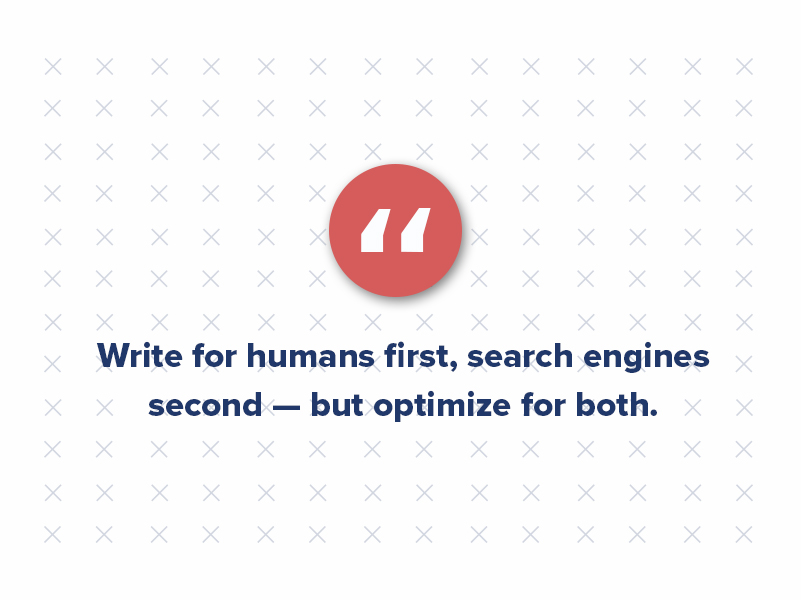
Consider this scenario: A regional property management firm decides to publish a “2025 Renter Preferences Report,” drawing on their internal resident surveys and local market data. They uncover, for example, that 68% of their prospects prioritize commute time over rent price (a hypothetical finding). They publish this report and an accompanying blog post with the data. This kind of original research in SEO is gold — dozens of other sites might quote it, bloggers will link to it, and it gives Google something truly new to chew on.
Meanwhile, a competitor down the road churns out ten AI-written articles like “Top 10 Apartment Amenities” that say nothing readers haven’t already seen. Which content will earn more backlinks, social shares, and trust? The one with original, data-driven insight. As one marketing leader put it, “AI can summarize existing data, but it can’t generate new insights.”
Brands that invest in creating those new insights will dominate search in the long run. This isn’t to entirely dismiss AI’s role. Generative AI is a fantastic tool for productivity — it can help draft outlines, rewrite sections for tone, or generate ideas. It’s being integrated into content marketing strategies everywhere. Use it for the grunt work, by all means. But don’t outsource your expertise.
The best approach is a hybrid one: leverage AI for efficiency, but infuse your content with the human touch, industry experience, and original data that only you can provide.
Think of AI as your copywriting assistant, not your strategist. The brands that win will be those who pair AI’s speed with human strategy and original research. That’s how you create content that’s not just more content, but better content. And one more word to the wise on this topic: transparency. Audiences are becoming savvy about AI-generated content, and some are wary of it.
A recent survey found 94% of consumers believe AI content should be disclosed, and 46% are less likely to trust a brand that doesn’t disclose AI-generated content. This means authenticity is part of content quality, too. If you do use AI in creating content, consider being upfront about it or at least ensure it passes a high bar of quality and fact-checking.
In the end, content that is honest, insightful, and truly useful will rise above the noise, no matter how it’s produced.
The Human Touch: Why User-Generated Content Still Matters
Amid all this talk of AI, it’s easy to forget a simple truth: people trust people. In the multifamily business, leasing is a very human decision — someone is choosing their next home. All the slick AI content in the world can’t replicate the authenticity of a real resident’s opinion or a genuine human voice. That’s why user-generated content (UGC) has become more vital than ever for SEO and marketing performance.
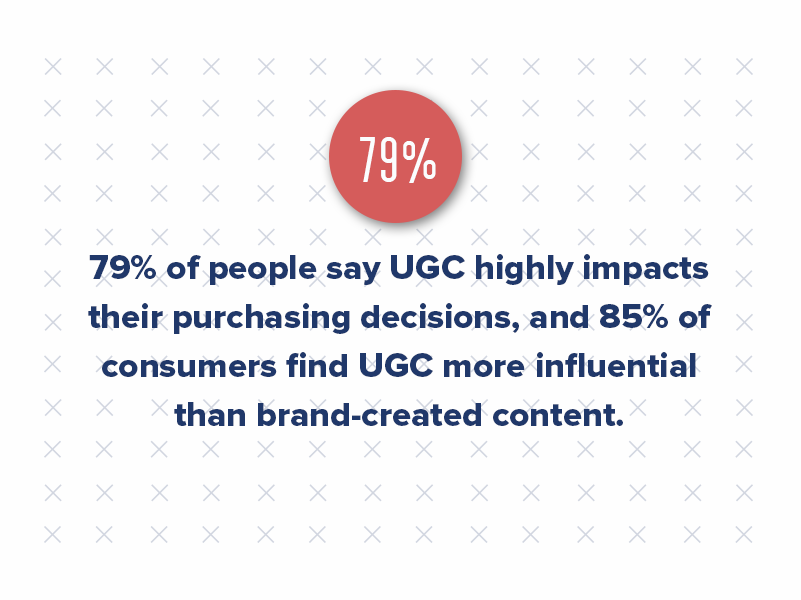
In fact, in a landscape increasingly flooded with AI-produced text and stock marketing copy, the human touch might be your biggest differentiator. Consider these telling statistics: 79% of people say UGC highly impacts their purchasing decisions, and 85% find UGC more influential than brand-created content.
In other words, if someone is on the fence about your apartment community, they’re far more likely to be swayed by a resident’s Instagram post or a review on Apartments.com than by your polished brochure copy. This makes sense — UGC is seen as more authentic because it is more authentic. It’s the digital word-of-mouth. Renters trust the lived experiences of other renters over a corporate website every time.
And notably, this isn’t just a consumer gut feeling; it translates into SEO performance as well. Google’s algorithm itself now prioritizes content like customer reviews, Q&A forum discussions, and social proof in search results.
When someone searches for “Best apartments in Uptown” or “{Your Property} reviews,” Google often showcases UGC (i.e., the star ratings, the review snippets, the questions people ask on Google Maps) right at the top of results.
Authentic voices carry weight. It’s no wonder Google has evolved to surface user-generated content prominently. Reviews and community-driven discussions signal trust and relevance.
And as of 2025, social media algorithms are also favoring UGC more than ever. Instagram and TikTok have tweaked their platforms to push authentic, community posts to the forefront of feeds.
A resident’s raw, unscripted TikTok tour of an apartment can go viral overnight, whereas a slick professional video might get ignored. The takeaway: UGC isn’t just “nice to have” — it’s a cornerstone of modern SEO and brand trust. So, how can multifamily marketers harness the power of UGC?
First, encourage your residents to create content. This could be as simple as running an Instagram hashtag contest for the best balcony garden photos in your community, or asking for testimonials to feature on your website. Every genuine review, rating, and social mention contributes to your “digital footprint” in search. Prospective renters often Google “[Your Property] reviews” — make sure there’s something positive for them to find. Even negative reviews, when responded to sincerely, can boost trust (and yes, engagement on those review pages helps SEO too).
Second, integrate UGC into your own content. Showcase real resident stories on your blog. Include quotes from testimonials in your email marketing. Curate social media posts by residents and share them (with permission). Far from ceding control of your message, this approach builds credibility. As marketing experts point out, brands that harness UGC see higher engagement and better conversions because consumers crave authenticity.
Google knows this — engagement and time-on-page are ranking signals. A heartfelt video testimonial might keep a prospect on your site longer (helping SEO) than a generic AI-written paragraph.
Finally, note that UGC can fill content gaps that your team might not even think of. Residents will discuss things in reviews and forums that aren’t on your radar — maybe praising the dog park during winter, or noting that the on-site gym gets crowded at 6 pm. These bits of information often contain keywords and long-tail phrases future renters search for (“dog-friendly apartments with winter facilities” or “apartment gym peak hours”).
By facilitating and listening to UGC, you indirectly boost your SEO for those niche queries, too. In a time when AI content is everywhere, UGC stands out as real, unscripted, and trustworthy. It’s content that AI can’t fake.
Make it a part of your strategy: encourage it, amplify it, respond to it. Not only will you earn renters’ trust, but you’ll also please the search engines by providing the kind of content they know users want to see.

Featured Snippets Are Fading: Enter Answer Engine Optimization (AEO)
If you’ve been keeping an eye on your Google traffic over the past year, you might have noticed something curious: those once-coveted featured snippets (the answer boxes at the top of search results) are showing up less often for your keywords. And when they do appear, they might be grabbing the answer and yielding fewer clicks to your site.
What’s happening?
In a word: evolution.
Google is transitioning from a “search engine” into more of an “answer engine,” especially with the rollout of its AI-driven features. For multifamily marketers, this means it’s time to pivot from traditional snippet-focused SEO to Answer Engine Optimization (AEO).
First, let’s talk about the decline of the featured snippet. Several recent studies have shown a significant drop in the prevalence of featured snippets on Google since late 2024. In one analysis, the number of queries that yielded a featured snippet fell by 35% between September 2024 and March 2025.
In some niches, the decline was even more dramatic — another dataset showed a 57% drop in snippet occurrence over that period for a set of tracked queries.
The culprit? Google’s new AI-generated answers (often called “AI overviews” in Search Labs) are starting to replace the traditional snippet in many cases.
Instead of a single website excerpt getting the spotlight, Google’s AI might generate a multi-source summary for the user’s query. Even when featured snippets do appear, their ability to drive clicks has diminished. Why? Because if the answer is right on the page, users have less reason to click through.
Recent research by Ahrefs compared search results with and without Google’s new AI overview present. The findings were sobering: when an AI overview was shown, the click-through rate (CTR) of the top organic result plummeted from about 7.3% to 2.6%.
That’s a massive drop in traffic for the site that technically “ranks #1.” In percentage terms, one study noted a 34.5% reduction in organic CTR for top pages when Google’s AI overview was in play.
Essentially, the AI answer is siphoning off clicks that would have gone to the organic results — a trend similar to how old featured snippets sometimes led to “zero-click searches,” but now on steroids. Google’s own CEO has claimed that AI overviews could improve engagement, but early data contradicts that.
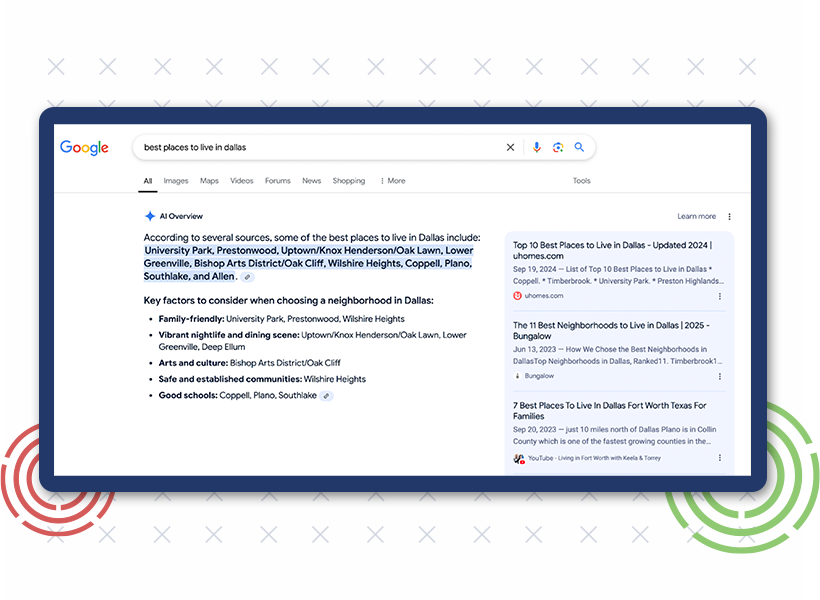
For marketers, this means that even if you maintain your rankings, you might see less traffic coming from those rankings if Google decides to answer the query on the SERP itself.
So, are featured snippets dying? It appears they’re certainly losing prominence. But the need to be the source of answers is not dying — it’s just shifting. This is where Answer Engine Optimization (AEO) comes in. AEO is the practice of optimizing your content specifically to serve as direct answers in these new paradigms.
Rather than just aiming for Rank #1 in a list of blue links, you’re aiming to be the answer that the search engine (or voice assistant, or chatbot) delivers to the user. It’s an evolution of traditional SEO, recognizing that more searches are happening in an answer-oriented context (think Google’s AI summaries, Siri’s spoken answers, Alexa’s responses, etc.).
What does AEO involve? In many ways, it builds on good SEO practices but with extra structure and clarity. Key tactics include:
- Provide Concise, Structured Answers: For common renter questions (e.g. “What amenities do luxury apartments have?” or “How much is the average rent in Uptown?”), make sure your content provides a clear, succinct answer. Use headings, bullet points, and schema markup (like FAQ schema) to signal the structure. AEO is about giving the algorithms exactly what they need to extract a direct answer. If you have a blog post titled “10 Questions to Ask When Renting an Apartment,” you might format it so each question is a header followed by a brief answer. This increases your chances of being pulled into a featured snippet or voice answer box.
- Optimize for Voice Search Phrases: Voice queries tend to be conversational and often phrased as questions or commands (“find me an apartment near the park with 2 bedrooms”). 58% of consumers use voice search for local business info, so it’s crucial to mirror that language in your content. This might mean incorporating Q&A-style content on your site. Think about the exact phrases a renter might speak into Siri or Alexa, and make sure those phrases (or close variations) appear in your copy. AEO and voice search optimization go hand-in-hand.
- Maintain Fast, Mobile-friendly, and Context-rich content: This hasn’t changed – the technical side of SEO (speed, mobile UX, meta tags) still matters for AEO. But additionally, context matters. For instance, if someone asks, “Which apartments in my area have dog parks?”, an AI-powered engine might favor content that directly addresses pet-friendly apartments in that specific area. Ensure you have hyper-local content and that your Google Business Profile, NAP (Name, Address, Phone) data, and local schema are all up to date. That way, if an answer engine is picking “best apartments near [neighborhood]”, your data helps put you in the mix.
- Focus on Intent and Accuracy: AEO is unforgiving to fluff. If your content doesn’t directly answer the user’s intent, it likely won’t be used by an answer engine. During content planning, identify the core intent behind keywords. For example, someone searching “apartment lease guarantor” likely wants to know what a guarantor is and how it works. AEO-oriented content on that topic should jump straight into an explanation, not beat around the bush. And accuracy is paramount – if answer engines find a more authoritative or precise answer elsewhere (or worse, if your content is wrong), you’re out. This is where having original research and clear sources can help (a nice overlap with the previous section). If you can cite a statistic or provide a fact no one else has, you become the authority the answer engine trusts.
It’s worth noting that AEO doesn’t replace traditional SEO; it augments it. You still want to rank well in the regular results, because not every search has an answer box, and many users still scroll. But AEO recognizes that the top-of-page real estate is evolving.

We’re headed toward a search results page that might have an AI summary at the top (with citations), followed by maybe one featured snippet or knowledge panel, and then the list of links. And in voice search, there is often only one answer given. It’s a winner-takes-all scenario. That’s why securing that answer spot can deliver outsized rewards.
Forward-thinking multifamily marketers should start treating AEO as an essential part of their SEO strategy. Answer Engine Optimization means thinking beyond “How do I rank #1 for [keyword]?” to “How do I become the trusted answer for questions my audience is asking?” It’s a shift in mindset from pure keywords to user questions and intents.
![Forward-thinking multifamily marketers should start treating AEO as an essential part of their SEO strategy. Answer Engine Optimization means thinking beyond “How do I rank #1 for [keyword]?” to “How do I become the trusted answer for questions my audience is asking?” It’s a shift in mindset from pure keywords to user questions and intents.](https://criterionb.com/wp-content/uploads/2025/06/Generative-AI-and-SEO-Call-Out-4.jpg)
In practice, this might mean creating more FAQ pages, writing more how-to guides and Q&A style blogs, and using tools like Google’s “People Also Ask” and Bing’s chat queries to research what questions are being asked. If featured snippets are indeed on the decline, then capturing that Answer Engine position (whether on Google SGE, a voice assistant, or an AI chat) is the next big prize.
Google’s SGE: What It Is and How to Adapt
By now, you’ve likely heard of Google’s Search Generative Experience (SGE) — Google’s bold experiment to infuse generative AI into the search results page. For multifamily marketers, SGE is one of the most important developments to watch, as it could fundamentally change how your prospective renters interact with search. Let’s break down what SGE is, how it’s reshaping search, and what you should do to stay ahead.
What is SGE? In simple terms, SGE is Google’s effort to provide AI-generated answers within Google Search itself. Instead of just showing the usual list of blue links, Google can now generate a rich answer at the top of the results for certain queries. This AI-powered summary might include text, bullet points, images, and citations with links to the sources. The idea is to give users a deeper, more intuitive result, especially for complex queries.
For example, a user could type a broad question like “What are the best neighborhoods for young professionals in Dallas with affordable rent?” and SGE would produce a concise overview: perhaps mentioning three neighborhoods, highlighting a couple key stats or insights for each (drawn from various websites), and then suggesting some next follow-up questions. It’s search meets AI meets a bit of a chat-like experience. Google says SGE aims to help people ask more nuanced questions, grasp topics faster with AI summaries, and even accomplish tasks directly from the search interface.
You might have seen examples where SGE can do things like draft an email or generate an image if prompted, though for most search marketing purposes, it’s the Q&A summary that matters. At its core, SGE represents Google’s response to the chatbots (ChatGPT, Bing Chat) that were threatening to upend traditional search. Google is basically saying: “We can do that too, right on our search page.”
Now, how does SGE reshape the search results page (SERP)? From what we’ve observed in beta tests and rolling updates, when SGE is activated for a query, it typically occupies the top of the SERP with a colorful background, spanning the width of the page. The traditional ads and search results get pushed further down. The SGE answer often provides a few key points and then perhaps 3-5 links as citations or “next steps” for the user to click if they want more detail.
In effect, it can function like a super-featured snippet. For multifamily, imagine a query like “Luxury apartments vs budget apartments differences” — SGE might display a short comparison table or list, citing an article that you (hopefully) wrote. The critical impact here is on visibility and clicks. If your content is one of the cited sources in an SGE answer, your brand gets visible at the top in the context of that answer, which is great for exposure.
However, the user might get a lot of info from the AI summary itself, meaning they might not click your link even if you’re cited. SGE, therefore, shifts some visibility from traditional organic results to AI-generated summaries.
If your content isn’t part of those summaries, you risk losing out on traffic and awareness. As one SEO expert put it, this change “changes the game for multifamily marketers” — if your site isn’t optimized to appear in SGE responses, you could be invisible to a segment of searchers. Traditional SEO principles still apply, but they must be expanded to account for how AI curates content.

So, what should multifamily marketers do to adapt to SGE? Here are a few strategies:
- Keep Creating High-Quality, In-Depth Content: This point cannot be overstated. SGE tends to pull from top-ranking, authoritative content to build its answers. Google isn’t inventing information; it’s synthesizing from the best of what it finds. That means your content still needs to earn its way to the top. Comprehensive guides, helpful blog posts, and resource pages that thoroughly answer renters’ questions stand a better chance of being included in SGE summaries. For instance, a well-researched blog on “10 Tips for First-Time Renters” that gains traction could be what SGE pulls from when someone asks a related question. Continue to prioritize original research and expertise as discussed earlier — those qualities make your content more likely to be seen as authoritative. In short, content depth and value matter even more now.
- Optimize for Conversational Queries: With SGE (and AI chat in general), we expect more users to type queries in a natural, question form. They might treat Google a bit like ChatGPT, using complete sentences or very specific questions. Adjust your SEO keyword research to include these long-tail, conversational queries. Consider adding an FAQ section to relevant pages addressing those questions (e.g., “What’s it like living in [Neighborhood]?” or “How do I budget for my first apartment?”). Being optimized for these nuanced questions increases your chances of getting picked up by SGE’s algorithms.
- Ensure You’re Technically AI-Friendly: This is new territory, but early indications are that proper schema markup (like FAQ schema, HowTo schema, etc.), clear headings, and well-structured content can help AI better understand and extract your content. Also, continue following E-E-A-T guidelines (Experience, Expertise, Authoritativeness, Trustworthiness) — Google’s AI is likely tuned to favor content from sources that demonstrate these qualities. For multifamily firms, this means showcasing your expertise (e.g., through author bios, case studies, and citing trustworthy data). If SGE is picking which site’s info to trust in an answer, you want to signal “we know our stuff and can be trusted.”
- Leverage Local SEO for SGE: Multifamily marketing is inherently local. SGE has shown improvements in handling local search queries — for example, “apartments near Central Park under $3k.” Make sure your local SEO is airtight: update your Google Business Profile with complete info and fresh photos, gather Google reviews (which both help traditional SEO and might influence AI results for local intent), and include localized content on your site. If there are common local questions (e.g., “Is [Neighborhood] safe for families?”), consider addressing those on your blog. SGE will likely use data from Google Maps, reviews, and local content when answering location-based questions, so be present in those data sources.
- Monitor and Measure: Start looking at your analytics and Google Search Console data for signs of SGE’s impact. Google is beginning to report when content is shown in AI overviews. You might see impressions for queries where you were cited by SGE without a click. Keep an eye on overall organic traffic and click-through rates on your top queries. If you notice drops that coincide with SGE’s rollout, that might prompt you to double down on AEO tactics or content updates. Conversely, if you see spikes in impressions but not clicks, that could indicate your content is being surfaced in SGE answers. It’s a new kind of metric to wrap your head around: being “visible” even without a click. We might need to start valuing that exposure in a similar way to how we view, say, a billboard impression — it has branding value even if it doesn’t drive an immediate click.
It’s important to remember that SGE is still an experiment. Google is testing and refining it, and it’s not yet available to all users as of this writing. There’s been both excitement and pushback; some users love the new AI answers, others find them confusing or worry about inaccuracies. Google will undoubtedly tweak the feature over time. Maybe SGE becomes the new norm; maybe it gets dialed back.
Regardless, the trend is clear: search results are becoming richer and more AI-driven. As a multifamily marketing leader, staying informed and agile is your best play. In summary, treat SGE as both a challenge and an opportunity.
- The challenge: your content now has to compete in an AI-curated space and not just the old 10 blue links.
- The opportunity: if you can land your content as part of an SGE answer, you gain prime visibility and the halo effect of being “what Google itself summarized.” Adapt your SEO strategy with SGE in mind, and you’ll be positioning your brand for the next generation of search.
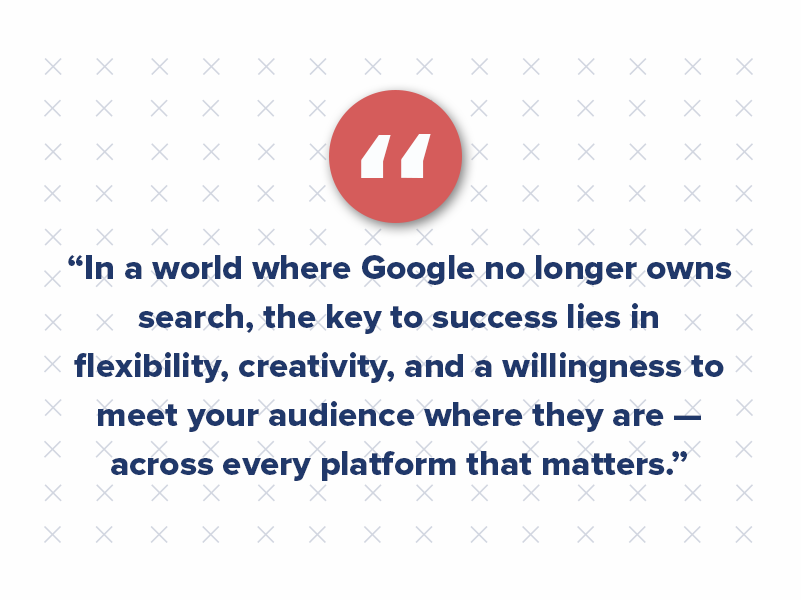
Back to the Basics: The Era of New SEO
The search and content landscape for multifamily marketing is undergoing its most profound shift in decades. Generative AI, alternative search platforms, and evolving user behaviors are rewriting the rules that many of us grew comfortable with. As an executive, it’s easy to feel a bit of uncertainty (or even skepticism) amid all the rapid change. But within this upheaval lies opportunity.
The key is to embrace the change strategically, without losing sight of timeless marketing truths. If there’s one theme that emerges from examining these trends, it’s a sort of “back to basics” by way of the future.
Yes, the tools and platforms are changing — from Google’s SGE, to TikTok search, to ChatGPT referrals — but what those algorithms and users ultimately seek remains consistent: relevance, value, and trust. In a world where AI can generate content by the ton, originality and authenticity become your trump cards.
For multifamily marketers, the mandate is clear: diversify and double down. Diversify your SEO approach beyond Google — optimize for that “search-everywhere” reality where renters might find you on Instagram, YouTube, or an AI assistant as much as on a SERP. But double down on what makes your brand stand out — your unique expertise, your data, your community of residents (who can advocate for you), and your human touch.
Practically, this means your marketing team’s playbook for the next 12 months might include actions like these:
- Conduct a Content Audit for Originality: Review your blog, website, and social content. How much of it is saying the exact same thing as your competitors (or what an AI could scrape together)? Identify places to inject original research in SEO content — perhaps commissioning a renter survey, analyzing your internal data for trends (e.g., “move-in rates are highest in Q3” or “pet owners stay 6 months longer on average”), or creating interactive content (like a rent calculator or neighborhood quiz). This original content will not only engage readers but also earn backlinks and citations that improve your Google SEO and even your presence in AI summaries.
- Build a UGC and Community Strategy: Make it easy and rewarding for your residents to leave reviews, share on social, and participate in testimonials. This might involve reputation management software or simply more active community management on your part. Remember, every star rating and review snippet can bolster your brand authority in SEO by signaling trust to algorithms (and humans!). As we saw, authenticity is king, and your residents can speak to that better than anyone.
- Train Your Team (and Yourself) on AI: Rather than fearing AI tools, empower your marketing team to use them wisely. AI can assist with keyword research (e.g., using ChatGPT to brainstorm question variants people might ask), help repurpose content (turn a blog post into a tweet thread or a video script), and handle mundane tasks — freeing your humans to focus on strategy and creativity. Establish guidelines for AI-generated content to ensure it meets your quality standards and is transparent. By weaving AI into your workflows, you stay efficient and signal that your organization is forward-thinking.
- Stay Educated on SEO Developments: The pace of change in search marketing is blistering. What Google rolls out this month might change by next quarter. Consider allocating time for your team to follow SEO news or even engage with SEO communities. When Google makes a major change (like an SGE update or an algorithm tweak), have a quick internal review of how it might affect your properties’ web traffic and lead flow. In short, keep your finger on the pulse. The companies that adapt fastest often gain a competitive edge.
- Refocus on Metrics that Matter: Lastly, rethink how you measure marketing impact in this new era. Traditional metrics like organic traffic and click-through rate are still important, but we might need to add new KPIs to the dashboard. For example, if zero-click searches rise, you might track “brand visibility” — such as how often your brand appears in search results or is mentioned by AI, even if a click doesn’t occur. You might track engagement on social platforms as part of SEO success (since those platforms drive search discovery). And of course, bottom-line metrics like lead volume, conversion rate, and occupancy rate remain the ultimate judges of success. Ensure that even as you try new approaches, you tie your efforts back to tangible business outcomes (leases signed, inquiries, tours booked). Upper management will appreciate that you’re innovating and staying accountable to results.
Navigating this new SEO landscape requires a blend of openness and steadfastness. Be open to the new: new platforms, new techniques, new consumer habits. Experiment with that TikTok idea, test a voice-search optimized FAQ, explore a partnership with local influencers, or try a pilot using AI for a content series. But remain steadfast in your commitment to your brand’s core value proposition and authenticity.
Technology will continue to evolve, but the fundamental need for trust and authority in marketing does not change. Generative AI and Google’s evolving search might reshape how SEO is done, but they don’t change why SEO is done — to connect your offering with the people who need it, in the moments they are searching.
The path forward is to adapt boldly while carrying forward the lessons of what truly resonates with renters. Do this, and you won’t just survive the changing SEO game; you’ll lead it, human touch and all, into the future of multifamily marketing.

How AI-Powered Search Features Are Reshaping SEO
What if the way we’ve been optimizing content for years (by chasing featured snippets) was no longer the best way to capture attention on the web?
For years, “position zero,” the coveted featured snippet spot, was the holy grail for content marketers and SEO specialists. Landing your website at the top of the search results page was a surefire way to increase visibility, build credibility, and drive massive traffic.
But with the rise of AI-powered technologies, such as Google AI Overviews, it seems like that era is starting to fade.

We’ve entered a time where generative models and AI content are no longer just buzzwords but driving forces shaping how we access and consume information. Google’s shift to more comprehensive AI summaries, or AI overviews, has begun to disrupt the very foundation of featured snippets. These overviews aggregate and summarize content from multiple sources, offering users a broader view of the answer to their search queries directly in the search results, often reducing the need to click through to any website.
This shift has left many wondering: Are featured snippets dying? And if so, what does that mean for the future of SEO, content creation, and customer service in the digital space?
As we dive deeper into 2025, it’s clear that Google Search is evolving, and so must our strategies to ensure our websites stand out.
Google AI Overviews: The New Frontier of Search
Google AI Overviews result from natural language processing (NLP) advancements, which allow AI to understand and generate human-like responses. Powered by machine learning models, these AI summaries are designed to answer a user’s query that synthesizes information from multiple web pages, providing a more holistic overview than a traditional text-based featured snippet.
Where featured snippets pull a direct, brief quote from one source to answer a query, AI overviews go further by compiling data and presenting it in a more natural, comprehensive summary. Imagine searching “What is SEO?” on Google and being presented with a detailed paragraph summarizing SEO, its components, benefits, and modern strategies — all directly on the search results page. No need to click through to a website, because the answer is already there, neatly packaged and ready for consumption.
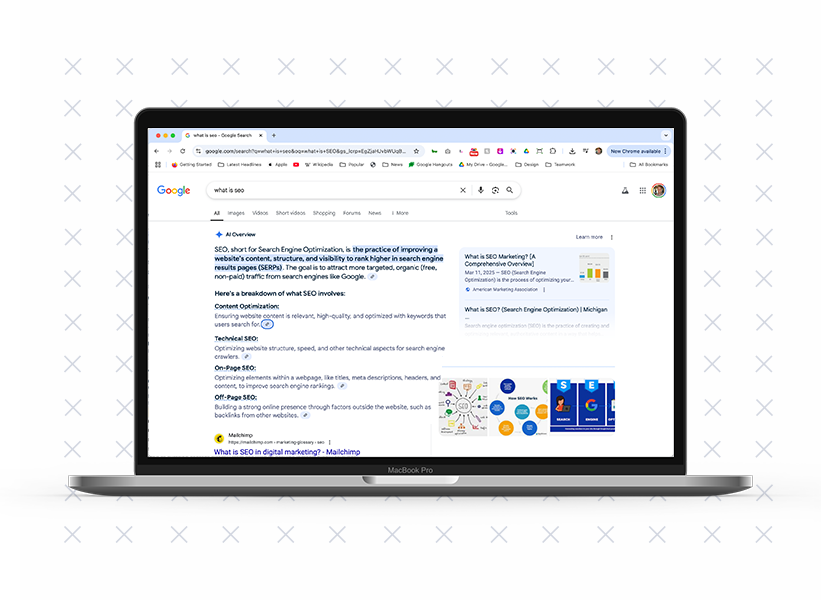
The underlying generative AI systems powering these overviews are trained on vast amounts of data, enabling them to “learn” the best way to present information. This technology creates realistic, human-like responses to queries and allows users to access detailed information without leaving Google Search. In other words, Google is improving at curating content directly from the web to provide instant, highly relevant answers.
How Google AI Overviews Are Impacting Featured Snippets
Featured snippets have long been a powerful tool in SEO, driving significant traffic by appearing at the top of search results. For years, businesses have worked tirelessly to optimize their content to earn that spot. However, AI-powered overviews are beginning to challenge this model. With AI overviews, Google can now provide more extensive answers in one place, effectively reducing the need for users to click on any links.
This shift is evident in the declining click-through rates (CTR) for featured snippets, as evidenced by a recent Google CTR study. As AI overviews rise, they take center stage, pushing featured snippets into the background. Instead of pulling a snippet from a single page, AI systems generate a more complete response by drawing from multiple sources, ensuring the user receives the most relevant and comprehensive answer.
For marketers, this change means the SEO game is evolving once again. Generative models reshape how information is presented, and ranking for a featured snippet isn’t the same as it used to be. With AI overviews rising to prominence, businesses must rethink their content strategies to stay visible and competitive in the Google Search results.
The Role of Generative AI and Large Language Models (LLMs)
It’s important to look at the role of generative AI and large language models (LLMs) to understand why AI overviews are becoming the norm. These technologies are designed to generate human-like content based on vast amounts of training data. Unlike traditional search algorithms that rely on keyword matching and content extraction, LLMs like OpenAI’s GPT models and Google’s BERT use deep learning to understand context, tone, and intent. This allows them to generate more sophisticated, accurate responses.
Their ability to synthesize information from multiple sources sets AI overviews apart from traditional featured snippets. A single snippet might pull a short excerpt from one webpage, but an AI overview aggregates insights from across the web, offering users a fuller picture. This type of AI content provides answers in a more dynamic, useful manner and can potentially change how users interact with search engines.
As Google AI continues evolving, we may see more nuanced answers and AI features integrated directly into the search results page.
How AI Overviews Impact SEO and Content Creation
For SEO professionals and content creators, the rise of AI overviews means the game is changing. The days of simply optimizing for featured snippets are fading, as the importance of generating AI-friendly content takes precedence. To adapt, businesses need to focus on crafting content that answers specific queries and provides in-depth, contextually relevant information that Google’s AI can use to generate summaries.
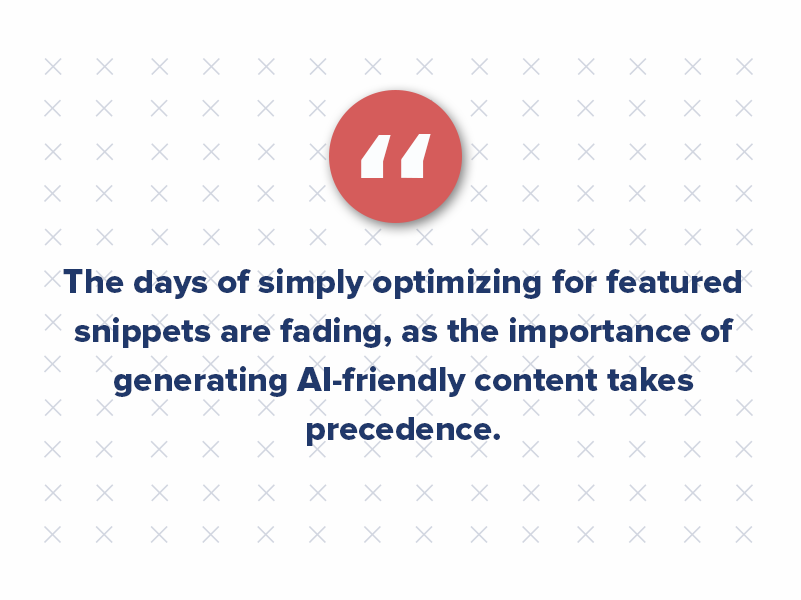
As Google AI Overviews become more prevalent, businesses must create structured and easy content for AI models to interpret. Clear headers, bullet points, and structured data will ensure that AI can properly index and use the information. Content that fully addresses specific questions is more likely to be selected for AI overviews and will have a better chance of appearing on the search results page.
The Declining Role of Featured Snippets: What Does It Mean for SEO?
So, does this mean that featured snippets are dead? Not exactly. While AI overviews are certainly making their mark, featured snippets are still valuable for SEO, especially for certain queries. However, the increased prominence of AI overviews means marketers can no longer rely solely on featured snippets to drive traffic. Instead, SEO strategies must evolve to optimize for AI-generated summaries and embrace the broader changes happening in the search landscape.
To adapt, businesses need to rethink their approach to content creation and prioritize creating long-form, comprehensive, and well-structured content that AI systems can easily process. Additionally, focusing on building authority and earning backlinks from high-quality sources can still help improve visibility, even in a world dominated by generative AI.
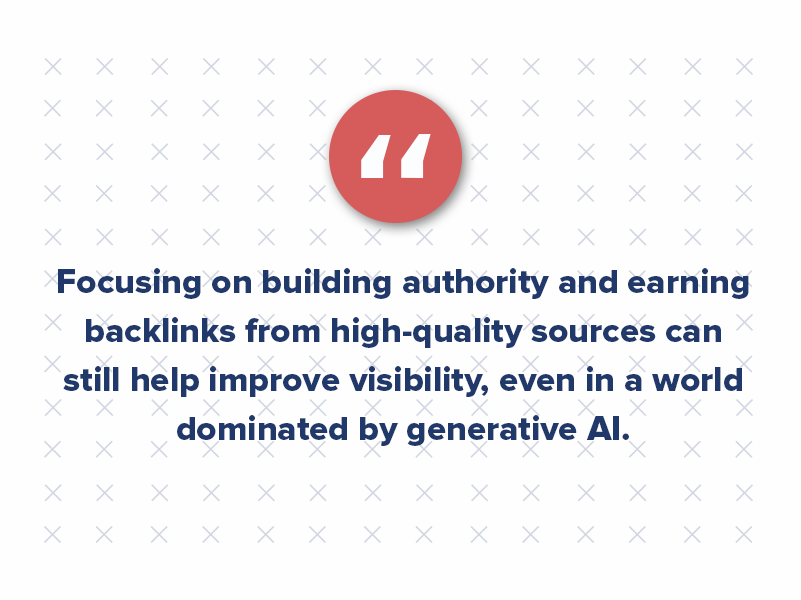
The Future of Featured Snippets and AI Overviews
The rise of AI overviews signals a shift in how information is consumed on the web, and it’s clear that the AI-powered future of search is already here. Featured snippets aren’t going anywhere, but their role will evolve as AI technology improves. The key for businesses is to adapt to this new reality by optimizing for traditional snippets and AI-driven features.
Ultimately, the future of SEO is about creating high-quality, user-friendly content that aligns with search engine algorithms and AI models. As generative adversarial networks (GANs) and neural network technologies continue to advance, the way we approach content and search will evolve.
What’s Next for SEO? Embrace the AI Shift
As we look to the future of SEO and content creation, it’s clear that Google AI Overviews are not just a passing trend; they’re a fundamental shift in how search engines will deliver information.
The next SEO phase will involve optimizing AI content, focusing on depth, relevance, and clarity while adapting to an AI-driven search ecosystem. Businesses that can harness the power of generative AI, fine-tuning their content to match AI needs, will be best positioned to thrive in this new digital age.
When AI-driven summaries are becoming the norm, the question is: how will you adapt your content strategy to stay visible on the evolving search results page? The time to embrace this shift is now.

Generative AI in Marketing: Is Original Research Still Worth It?
AI-generated content has exploded in the last few years, making SEO efforts faster and more scalable than ever.
But with the rise of generative AI, are we losing true expertise? AI can churn out thousands of words in seconds, but is it just repackaging what’s already out there?
In contrast, original research brings something new to the table — data-driven insights that drive authority, build trust, and differentiate brands.
But scaling original research in SEO is tough. It takes time, effort, and resources.
So, in an era where generative AI is at our fingertips, is original research still worth the investment? Or are we headed toward a future where SEO is simply about who can produce content the fastest?
We asked eight thought leaders for their take on original research vs. AI-generated content, and the consensus is clear — while generative AI in marketing can enhance efficiency, original research remains the key to true authority.

The Challenge of Scaling SEO Through Original Research
Scaling SEO with original research is problematic because it requires time, money, and expertise. Unlike AI-generated content, which can be produced quickly, original research involves surveys, proprietary data collection, and industry reports.
Aaron Franklin, Head of Growth at Ylopo, knows firsthand how powerful original research can be. He ditched generic SEO tools for manual surveys and found that what people actually care about often differs from what search algorithms assume.
“In 2018, I manually surveyed 400 homeowners instead of relying on SEO tools,” Franklin said. “The result? A report revealing 68% cared more about commute times than school districts — a nuance algorithms missed. That study still drives 12% of our organic traffic today.”
Franklin’s experience highlights a key limitation of AI: It can summarize existing data, but it can’t generate new insights. This is why original research holds lasting value — it feeds unique, high-quality content into the SEO ecosystem rather than rehashing the same information AI scrapes from the web.
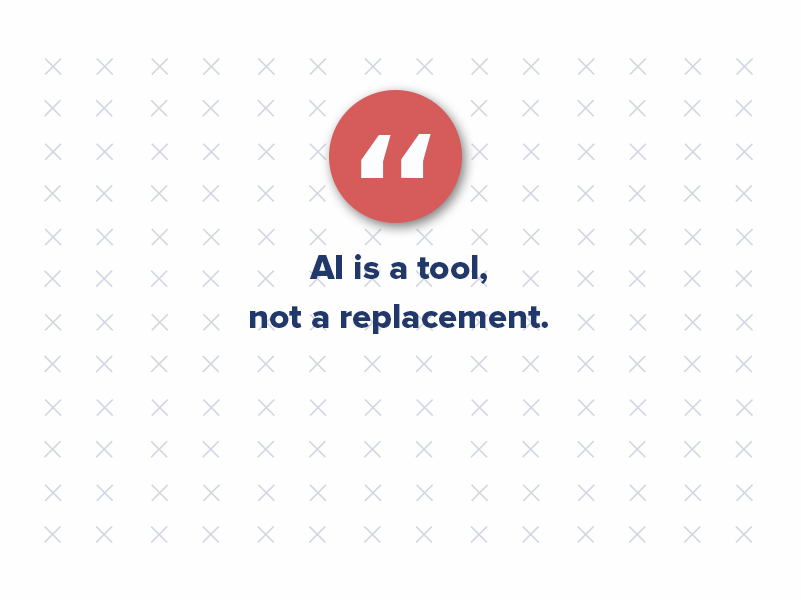
Why Original Research Still Matters in SEO
Many marketers agree: While original research is challenging to scale, it’s more impactful in the long run.
Lana Rafaela Cindric, SEO & Content Manager at SiteGuru, points out that people are tired of seeing the same recycled content online:
“Most content out there is rehashed and plain annoying to users who now turn to Reddit for fresh insights,” Cindric said. “We first look at what our data can tell us about audience challenges, then format it into what works best — blog posts, videos, or whitepapers. This has led to increased organic rankings and social shares.”
This is the real power of original research — it doesn’t just help SEO; it builds brand authority in SEO and thought leadership.
Darwin Liu, CEO of X Agency, emphasizes how original research sets brands apart:
“Scaling SEO with original research is challenging but rewarding. We’ve increased engagement by 50% through data-driven reports, secured high-authority backlinks, and created evergreen content that fuels long-term organic growth. AI can summarize, but it can’t replace real-world insights.”
Simply put, brands willing to invest in original research will own their niche, while those relying solely on AI-generated content risk blending into the noise.
AI + Original Research: Finding the Balance
The best approach isn’t choosing between AI and original research — it’s leveraging both. AI can process large datasets and summarize trends, but it works best when paired with original data that generative AI doesn’t have access to.
For example, Swayam Doshi, Founder of Suspire, ran a study on eco-friendly packaging preferences, and the results were game-changing:
“By publishing our findings, we saw a 41% increase in organic traffic within three months. AI made it easier to analyze the data, but the original research helped us stand out as a thought leader.”
Similarly, Laurence O’Toole, CEO of Authoritas, notes that original research plays a huge role in lead generation and competitive advantage:
“Original research works exceptionally well for high-quality lead generation and increased conversion rates. It also generates links and shares, positively impacting rankings.”
AI alone can’t create this level of engagement. But when AI is used as a supporting tool — to process data, automate tasks, or repurpose insights — it becomes a powerful asset in scaling research-driven content.
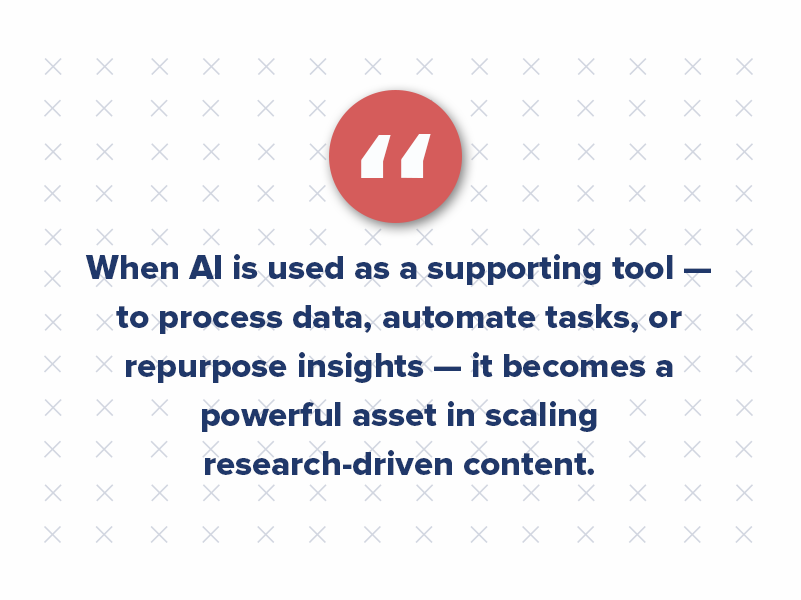
Are We Losing Expertise in the Age of AI?
With AI-generated content flooding the internet, some fear that true expertise is being lost. But for those willing to go beyond generic AI-driven content, the opportunity to stand out is greater than ever.
As Yoyao Hsueh, Founder and CEO of Floyi, puts it:
“Original research is the gold standard of content and SEO. AI can summarize existing knowledge, but it can’t generate new knowledge. That’s where real expertise comes in.”
At Criterion.B, AI is an incredibly useful tool for content marketing, but it should never replace human expertise. Brands that commit to producing new insights — whether through surveys, case studies, or proprietary research — will always have an edge.
The future of SEO isn’t about who can generate the most content the fastest. It’s about who can provide the most valuable content.
That’s what sets real thought leaders apart.

Why Multifamily Marketers Must Optimize Beyond Google
The search landscape has shifted dramatically, and Google no longer holds the monopoly it once did.
While it still leads with 18.8% of the global search marketshare, platforms like Instagram, Baidu, Snapchat, and Amazon are gaining traction, each carving out its own space in how users search for and interact with content.
Instagram has secured its position as the second-largest search platform, reflecting a clear trend: search behavior is diversifying.

For multifamily marketers, this shift means that SEO strategies can’t rely solely on Google anymore. With users increasingly turning to alternative platforms to discover properties, neighborhoods, and community experiences, the goal must be to optimize for multiple search engines and social platforms to stay relevant and visible.
The future of SEO lies in embracing this fragmented search ecosystem and crafting strategies that work across platforms.
Why Google Isn’t the Only Search Game in Town
While Google continues to be a leader in search, its dominance is gradually shrinking as users explore platforms tailored to specific needs. For multifamily properties, this shift signals a need to diversify SEO strategies and rethink digital multifamily marketing efforts. Platforms like Instagram, Snapchat, and Amazon are becoming integral to how users search for information, make decisions, and engage with brands.

Instagram, for example, has evolved into a powerful search engine in its own right. Users frequently search for local businesses, community visuals, and reviews on the platform, making it an invaluable tool for multifamily marketers looking to enhance user experience. Between Instagram’s visual appeal and ability to optimize posts with long-tail keywords, marketers can connect with potential renters where they’re already searching.
Snapchat offers another avenue, especially for targeting younger demographics. Its visual-first approach aligns well with creating high-quality content that resonates with users deciding where to live. Incorporating keyword research into captions and leveraging geotargeted filters can boost visibility for multifamily properties in local searches.
Although primarily a marketplace, Amazon plays a surprising role in organic searches related to housing essentials and living spaces. Multifamily marketers can use this platform to create content that links back to their properties, like blog posts about decorating small apartments or tips for maximizing storage. This strategy increases organic traffic and strengthens the marketing plan by addressing users’ specific search queries.
Relying solely on Google rank means missing opportunities to connect with your target audience across platforms where they spend significant time. Diversifying your content creation efforts to optimize for multiple platforms ensures that your multifamily property ranks higher in organic searches and builds trust with potential renters.
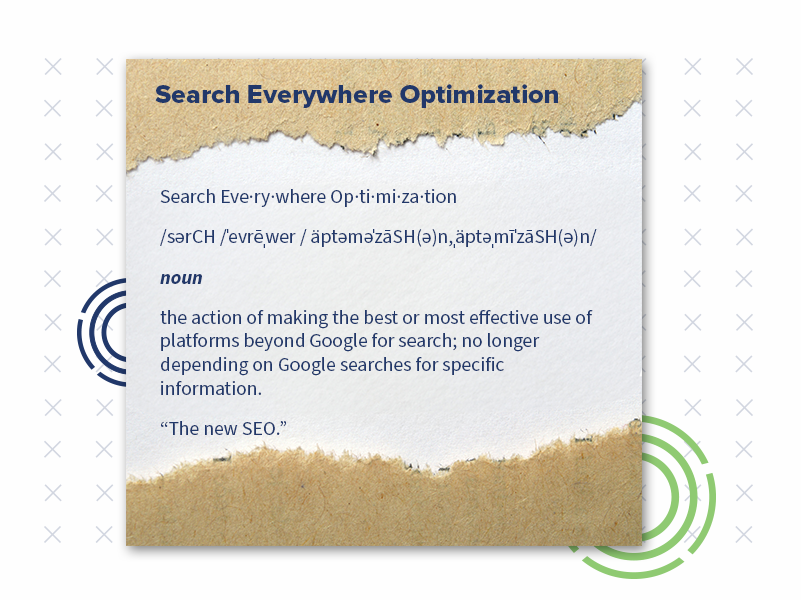
Strategies to Optimize Beyond Google
If you only optimize your content for Google, you’ll likely miss out on many prospects. This is why we recommend the new SEO approach.
What’s the “new” SEO? It’s “search everywhere optimization.” This means we must take more ownership to optimize beyond Google.
SEO is evolving and you need to adapt to help maintain overall traffic levels through new ways of thinking and modern practices.
Even Google’s Search Liaison, Danny Sullivan, said, “One of the ways to be successful with Google Search is to think beyond it.”
Here are some key strategies to help you succeed:
1. Optimize for Visual Search on Instagram
Instagram is a powerhouse for visual storytelling. The demand for quick, visually engaging content is reshaping how people search. Video content is shared twice as much as other formats, and 58% of Instagram users report feeling more connected to a brand after watching their Instagram stories. Social media platforms now serve as discovery tools, helping users find local businesses, community events, or even apartment listings.
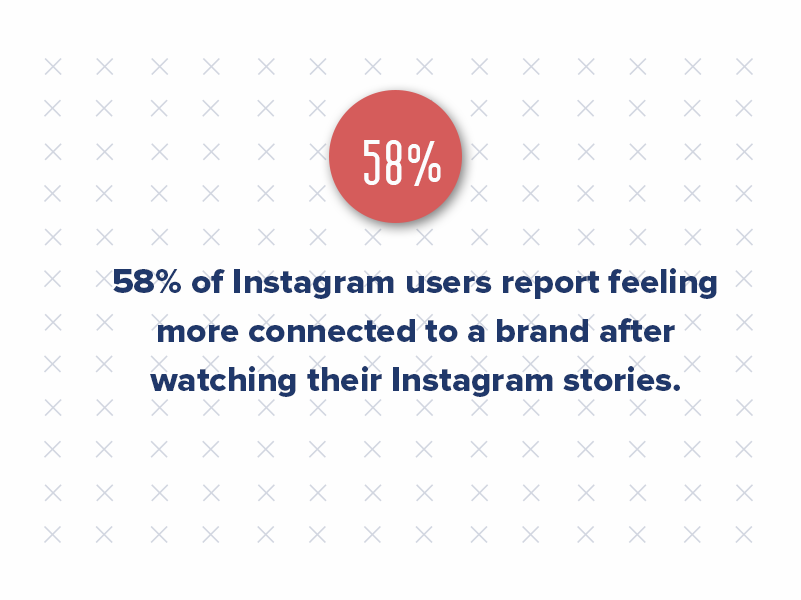
Create content that highlights property amenities, neighborhood culture, and resident experiences. Use location-based hashtags, geotags, and Instagram Stories to enhance discoverability. High-quality, engaging visuals are more likely to appear in search results and resonate with users exploring apartment living.
2. Leverage Local SEO on Multiple Platforms
While Google Business Profile is crucial, expanding local SEO efforts to include platforms like Bing and Yelp can amplify your visibility. Ensure your property listings include accurate and consistent NAP (Name, Address, Phone) details across all platforms.
3. Embrace Short-Form Videos for Snapchat
Snapchat’s focus on ephemeral content makes it a valuable tool for showcasing quick property tours, community events, or local attractions. Short-form video content optimized for Snapchat can help you connect with younger audiences searching for lifestyle-oriented apartment options.
4. Enhance E-Commerce Style Listings on Amazon
Amazon’s search functionality isn’t just for products. It’s increasingly used to explore service offerings and local listings. Multifamily properties can capitalize by creating product-style listings that detail apartment features, benefits, and even move-in packages.
5. Incorporate Schema Markup Across Platforms
Structured data remains a cornerstone of multifamily SEO, but its application must extend beyond Google. Use schema markup to enhance your property listings on Instagram, Amazon, and other platforms to ensure search engines and users can easily interpret your content.
6. Track Cross-Platform Search Behavior
Use analytics tools beyond Google Analytics to track engagement and search trends across platforms. Understanding how your audience interacts with each platform allows you to fine-tune your strategies and allocate resources effectively.

7. Spark Interest With TikTok SEO
TikTok is also a major player in reshaping search behavior. Users turn to TikTok for quick, authentic reviews, how-to guides, and viral trends that often create or reignite search demand on platforms like Google or Amazon. For example, products that gain traction on TikTok, like turmeric skincare or Lululemon’s belt bag, see surges in related search terms across other channels. Multifamily marketers can apply the same principle by creating TikTok videos showcasing property amenities or neighborhood highlights, sparking interest that leads to deeper searches elsewhere.
TikTok SEO involves more than just hashtags. Saying keywords in the audio, using text overlays, and adding keywords in captions and transcriptions all contribute to improved visibility. Embedding TikTok videos on your website can also increase engagement and complement traditional SEO strategies.
8. Attract High-Intent Audiences on Pinterest
With over 450 million active users monthly, Pinterest has become a vital visual search engine that multifamily marketers can leverage to increase brand awareness, drive organic traffic, and engage potential renters. Pinterest users are intentional searchers; this means they often use the platform to gather inspiration or make purchasing decisions, making it an ideal place to attract high-intent audiences.
Pinterest operates on a search-based algorithm, similar to Google. Research relevant keywords using tools like Pinterest Trends or keyword research tools. Focus on terms that resonate with potential renters, such as “luxury apartments,” “pet-friendly communities,” or “downtown living inspiration.” Incorporate target keywords naturally into pin titles and descriptions to improve search discoverability. Create video pins showcasing property tours, local attractions, or resident testimonials to capture attention and engage users.
The New Rules of Multifamily SEO
The rise of alternative search platforms doesn’t mean Google is obsolete, but it does mean multifamily marketers need a more nuanced strategy. Prioritize platforms based on your target audience’s preferences and behaviors.
For example, if your demographic is Gen Z, focusing on Instagram and Snapchat might yield better results than traditional Google SEO. Conversely, Amazon’s utility-driven search features could be more effective if you’re targeting families or professionals.
Diversifying your SEO efforts ensures that your property remains discoverable across various search contexts, whether it’s a renter looking for reviews on Instagram or exploring nearby amenities on Snapchat.
Looking Ahead: A Multi-Platform Future
As search behavior continues to evolve, staying ahead requires a mindset shift. Think beyond Google to create a comprehensive presence across platforms. By optimizing for Instagram’s visual searches, Amazon’s utility-driven queries, and Snapchat’s ephemeral content, you’ll position your property to attract renters no matter where they search.
In a world where Google no longer owns search, the key to success lies in flexibility, creativity, and a willingness to meet your audience where they are — across every platform that matters.

The Experiment That Could Redefine Search
Google’s Search Generative Experience (SGE) is an ambitious experiment that aims to revolutionize how we interact with search engines. However, like any groundbreaking innovation, it’s far from a finished product.
Just as self-driving cars require years of refinement, testing, and real-world adaptation, SGE needs time to mature, improve its technology, and assess its impact on users.
Yet, there’s a growing assumption that SGE — and generative AI platforms like ChatGPT or Bard — will completely disrupt search as we know it, replacing traditional methods and consolidating how we find information.
But this binary thinking oversimplifies the evolution of technology. Just as Facebook, Instagram, Snapchat, TikTok, Pinterest, LinkedIn, and X each carve out unique roles in the social media ecosystem, multiple platforms and models can coexist in the search landscape.
Every platform serves a specific purpose, and user behavior adapts based on the context. While SGE Google and AI-driven platforms bring exciting possibilities, they’re not one-size-fits-all solutions. Traditional search still holds value, offering depth and precision in ways AI hasn’t mastered yet.

What is SGE?
Before diving into the misconceptions, let’s first clarify what SGE is all about.
SGE represents Google’s effort to enhance traditional search using AI. It aims to provide users with deeper, more intuitive search results for every query. The goal is to transform how people search, simplify complex inquiries, and deliver faster, more actionable insights.
According to Google, SGE enables users to:
- Ask more nuanced and descriptive questions that go beyond traditional keyword searches.
- Quickly grasp the essence of a topic with curated links to explore further details.
- Kickstart tasks like drafting content or generating images directly within the search interface.
- Seamlessly continue their search journey with conversational follow-ups and suggested next steps.
At its core, SGE isn’t just about answering questions — it’s about reimagining how we interact with information, making the process more dynamic, contextual, and efficient.
Why does Google SGE matter?
SGE represents the next evolution of search engines. Rather than displaying a list of blue links, SGE provides AI-generated responses to user queries, often summarizing key information from top-ranking content. This means that search engines like Google are moving toward offering users direct, concise answers without requiring them to click through multiple sites.
This shift changes the game for multifamily marketers. If your property’s website, blog, or content marketing strategy isn’t optimized to appear in SGE responses, you risk losing visibility and, ultimately, potential leads. Traditional SEO principles still apply, but they must be expanded to align with how AI curates and prioritizes content.
What’s the impact on multifamily marketing?
1. Shifting visibility from clicks to summaries
Google SGE reduces reliance on traditional organic clicks by summarizing content directly within the search engine results page (SERP). If your content isn’t surfaced in AI summaries, this could mean fewer direct website visits for multifamily properties.
However, the upside is that well-optimized content has the potential to be featured in these summaries, increasing your visibility to renters at a critical stage in their search journey. Being included in an SGE response could position your property as a trusted, go-to source.
2. Increased importance of informational content
Renters often use search engines to explore neighborhoods, compare amenities, or find advice on leasing. SGE prioritizes content that answers these queries comprehensively and accurately. Thus, producing high-quality, value-driven informational content is more critical than ever.
Blogs, FAQs, and resources tailored to renter pain points — such as “best neighborhoods for families” or “tips for leasing your first apartment” — can position your property as an authoritative source that SGE highlights.
3. AI-powered local search optimization
SGE leverages AI to improve local search accuracy. For multifamily properties, this means that appearing in SGE summaries for queries like “best apartments near downtown Austin” or “pet-friendly apartments in Miami” requires a renewed focus on local SEO tactics. Accurate Google Business Profiles, consistent NAP (Name, Address, Phone Number) data, and localized content are crucial in being featured.
AI Disclaimers and Compliance
As AI-generated content becomes more prevalent, ensuring transparency and compliance has become a priority for businesses leveraging these tools. Integrating SGE into search engines like Google amplifies this need, as users demand clarity and authenticity in the content they interact with.
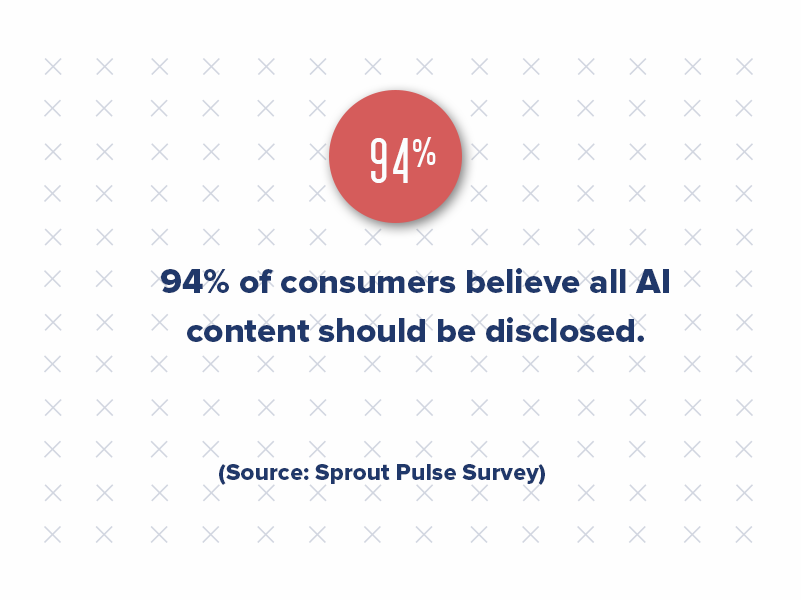
Why do you need AI disclaimers?
A Q2 2024 Sprout Pulse Survey revealed that 94% of consumers believe all AI content should be disclosed, highlighting a growing concern about transparency. Furthermore, 46% of consumers are less likely to buy from a brand that posts AI-generated content without acknowledgment. This sentiment underscores the importance of building trust with your audience by clearly stating when content is created or assisted by AI.
Many publications, including Google itself, have begun adding disclaimers to articles produced entirely or in part by AI. These disclaimers inform readers and reinforce a brand’s commitment to transparency and ethical practices.
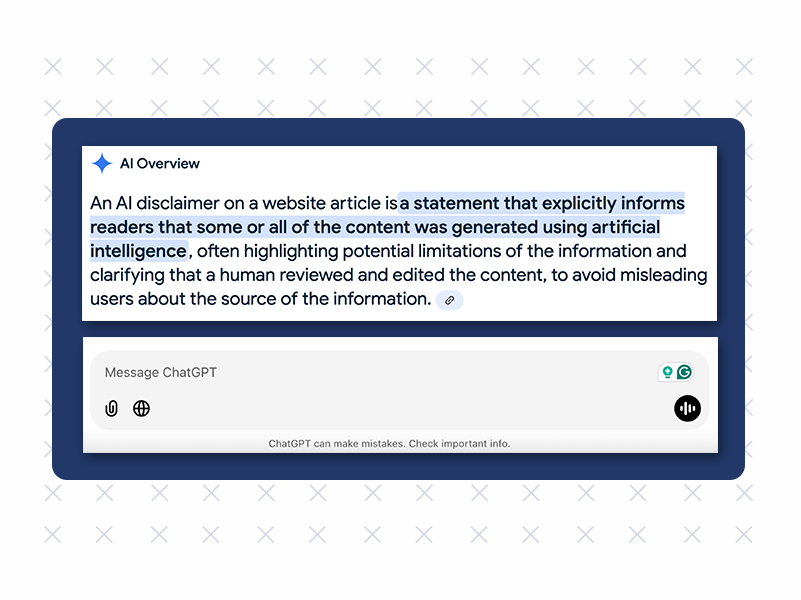
How can multifamily marketers comply?
Incorporating AI disclaimers into your content strategy ensures compliance with emerging best practices while fostering trust among renters:
- Transparency in Content: Include disclaimers on blog posts, emails, or FAQs indicating when AI tools were used in content creation.
- Blend Human Creativity with AI: Balance AI-generated outputs with human insights to maintain an authentic voice that resonates with your audience.
- Train Your Team: Equip your marketing team with guidelines on using AI ethically and disclosing its involvement appropriately.
Adapting Your Strategy for SGE Success
As clickthrough rates decline, ads become less common, and long-tail queries gain prominence, multifamily marketers must adapt to thrive. Here are actionable ways to ensure your strategy aligns with this new era:
1. Optimize for conversational queries
SGE responds to conversational, natural-language questions such as “What are the best luxury apartments in Chicago?” Your content needs to mirror this format. Create blog posts, FAQs, and landing pages that address these questions directly. Use tools like ChatGPT or Google’s “People Also Ask” data to uncover common renter questions and answer them comprehensively in your content.
2. Create long-form, comprehensive content
SGE favors detailed, authoritative content. If your site lacks in-depth resources about your property, community, or the renting process, now is the time to build them. Write detailed blog posts, such as “10 Things to Know Before Renting in Downtown Denver,” incorporating local insights, amenities, and tips to position your property as a trusted expert.
3. Emphasize structured data
Structured data helps search engines understand your content, improving its chances of being included in SGE summaries. Multifamily properties can use schema markup for local business details, reviews, pricing, and amenities. Implement schema for apartments to showcase your property’s unique selling points, such as floorplans, neighborhood details, and available units.
4. Prioritize high-quality local SEO
Local search is crucial for multifamily marketing, and SGE heightens the importance of accurate, localized information. Ensure your Google Business Profile is updated and reflects your property’s offerings. Include location-specific keywords in your meta descriptions, page titles, and content to ensure visibility in location-based queries.
5. Leverage multimedia content
SGE often integrates videos and images into its responses. Multifamily properties that create visually engaging content like property tours, community highlights, and testimonials are more likely to stand out. Create short, engaging videos optimized for YouTube and embed them on your site to increase the likelihood of appearing in search engine results pages.
6. Prioritize E-E-A-T
Experience, Expertise, Authority, and Trust (E-E-A-T) have always been crucial in SEO, but they are even more important in a generative AI world. SGE prioritizes content that exudes credibility and reliability. To excel:
- Showcase experience through user testimonials, case studies, and real-life success stories.
- Highlight expertise with well-researched blog posts and insights.
- Build authority by earning backlinks from reputable sources and optimizing local SEO.
- Reinforce trust through transparent AI disclaimers and high-quality, factual content.
7. Optimize for long-tail keywords
SGE’s focus on detailed, conversational queries makes long-tail keywords more important than ever. By diving deeper into niche topics, you can increase the likelihood of your content being included in SGE responses.
Instead of targeting general terms like “luxury apartments,” optimize for queries such as “luxury apartments near public transit in Denver” or “pet-friendly studio apartments in Miami’s Wynwood neighborhood.”
8. Anticipate lower clickthrough rates
With SGE providing detailed summaries directly on the SERP, users may click through less often. However, this doesn’t diminish the importance of your content — it simply shifts its role. High-quality, scannable content will likely be featured in SGE summaries, ensuring your brand remains visible even if clicks decline.
Pro Tip: To measure your content’s success beyond traditional clickthrough rates, focus on engagement metrics like time on page, bounce rate, and conversion rate.
9. Prepare for fewer ads
As Google integrates SGE, the volume of ads may decrease, making organic visibility even more competitive. To maintain a presence:
- Double down on SEO strategies that align with AI, such as content that answers user queries comprehensively.
- Invest in high-value ad placements that offer tangible ROI rather than spreading your budget across low-performing campaigns.
Adapting to What’s Next
The future isn’t about one technology replacing another — it’s about how these platforms evolve, specialize, and find their place in a constantly shifting digital ecosystem.
Time will tell how SGE reshapes search, how users adapt, and how businesses respond. But what’s clear is this: navigating this new terrain requires a thoughtful strategy, an open mind, and a willingness to adapt to what’s next.

Why Apartment SEO and Multifamily PPC Are Essential for Effective Marketing
Digital multifamily marketing has evolved rapidly. While a well-designed and responsive apartment website can walk prospects through the renting process, it cannot bring them to the site independently.
Here’s where the dynamic duo search engine optimization (SEO) and multifamily PPC step in.

Diving Deeper: The Magic of SEO & PPC
Imagine you’ve started a new band and are planning your first gig. How would you let people know? Flyers are a traditional yet effective promotional method. But what if those carefully designed flyers were merely piled on a street corner, untouched?
Your multifamily website is like that flyer. It’s compelling and beautiful by itself, but how will your target audience find it?
SEO (Search Engine Optimization) – Think of SEO as strategically placing those flyers where your potential renters often visit. The ultimate aim? Climbing the ranks on search engines like Google. This is achieved by understanding your property’s unique features and aligning them with what your target audience is searching for. It’s not just about pushing your narrative; it’s about stepping into the searcher’s shoes. By understanding their needs, frustrations, and interests, you can position your brand to meet them right where they are. This process extends to your website content, blogs, social media, and back-end coding.
PPC (Pay-Per-Click) – This is a tad more aggressive. Using the band analogy, it’s like sending a band member into a popular club to hand out flyers directly to people who’d likely attend the gig. It costs more, but the results can be substantial. These ads appear prominently on search engine results. The beauty of PPC? You only pay when someone clicks to view your content.
The Synergy of SEO and PPC
Using both these methods together is where the magic happens. SEO lays the groundwork for a consistent and long-term online presence. It’s like building your band’s reputation. On the other hand, PPC can be the quick jolt of attention you need, such as announcing a debut album or a special event.
In essence, while SEO is the marathon, ensuring consistent visibility, PPC is the sprint, giving instant boosts when required. They’re integral for an effective multifamily digital marketing strategy in today’s competitive landscape.
Partners in Crime
Don’t just build a website and hope for the best. With a potent combination of SEO and PPC, backed by deep industry research and a clear understanding of your target audience, your property can stand out in the bustling apartment market. Remember, understanding your residents is a continuous journey, and it should form the backbone of all your digital marketing strategies.
Top Tips for Adding SEO and PPC to Your Campaign
Whether you are new to multifamily property marketing or looking to sharpen your approach, implementing SEO and PPC can seem daunting. However, with the right strategy, you can harness their full potential. Here are six top tips to ensure your campaign stands out:
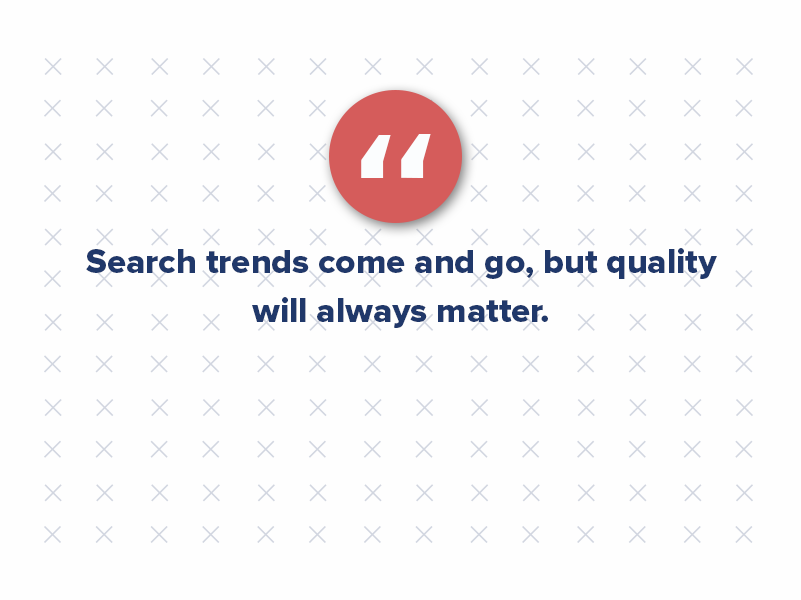
1. Prioritize Content Creation
High-quality, relevant content is the backbone of SEO. Update your website with regular blog posts, infographics, and videos that provide value to your audience. This not only increases your website’s credibility but also keeps visitors engaged.
2. Mobile Optimization Is Crucial
More users access websites from mobile devices than desktops. Ensure your multifamily property website is mobile-friendly. A responsive design, faster load times, and easy navigation can significantly improve user experience and boost your search rankings.
3. Utilize Local SEO
Most renters search for properties within their desired area. Optimize your website for local searches by claiming your Google Business Profile, gathering positive reviews, and ensuring your name, address, and phone number are consistent across all platforms.
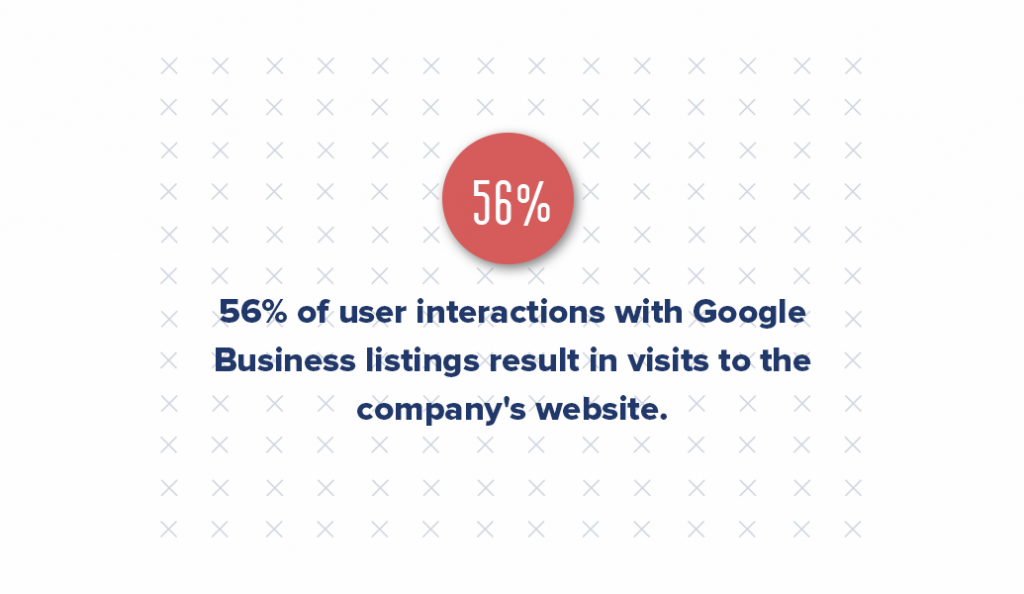
4. Use Laser-focused Targeting
The beauty of PPC is its ability to reach specific demographics. Use the insights from your market research to target specific age groups, interests, or behaviors. This ensures your ads reach those most likely to convert.
5. Regularly Test and Optimize Your Ads
Digital trends and audience preferences can shift rapidly. Regularly A/B test your ad copies, designs, and calls to action. This helps identify what resonates most with your audience and refines your approach accordingly.
6. Set Clear Campaign Objectives
Are you looking to drive immediate rentals, promote a special offer, or increase brand awareness? By setting clear objectives, you can tailor your PPC campaign, choose the right bidding strategy, and measure your success more accurately.
Two Sides of the Same Coin
Remember, SEO and PPC are two sides of the same coin. When implemented together, they can amplify each other’s results. For instance, the keywords that perform well in PPC can inform your SEO strategy. Similarly, the insights gathered from SEO analytics can guide your PPC targeting. By maintaining a cohesive approach, you can ensure a seamless and efficient multifamily marketing campaign.

How to Support Consistent Growth for Your Multifamily Business
The multifamily market has seen a paradigm shift with the rise of inbound marketing. A comprehensive perspective is vital as you construct your marketing funnel, from crafting insightful blog posts to launching targeted Facebook ads.
New marketers eager to build captivating campaigns and hone their content marketing efforts might sometimes overlook crucial elements like the leasing agent’s strategic role and the nuances of the target audience.
Without a dynamic strategy for enticing potential customers, even the most detailed funnel risks stagnation. Ensuring that every facet of your marketing efforts works harmoniously is essential for generating loyal customers.
Focusing on the Funnel
A successful marketing idea hinges on mastering the inbound marketing funnel. For those who are new to this approach, it’s common to launch numerous campaigns with a keen focus on the buyer’s journey at every stage.
However, the true secret lies in optimizing strategies for prospective customers. Emphasizing search engine optimization (SEO) ensures your business consistently appears atop search results, making it more visible to potential customers.
Campaigns certainly have their place, but the key to long-term success is concentrating efforts at the funnel’s top. This is where initial interest from potential customers is captured.
Without this interest, there’s no pool of leads to nurture or engage with. Excellent customer service and content tailored specifically for your target audience is essential. With this approach, you can guarantee a steady flow of visitors and create opportunities to convert them into long-term customers or clients.
Making Your Multifamily Marketing Funnel Scalable
The key to any business growth is scalability. But how do you translate a marketing funnel to meet scalability needs?
The first requirement is to look solely at the numbers. If you are struggling to bring in 1,500 web visitors per month and are only converting that traffic to leads at a rate of 3%, the outlook for company growth is not promising.
When faced with this kind of issue, it is essential to change your funnel, albeit one at a time. Again, your concern should be primarily on your traffic generation or how to increase that visitation from 1,500. If nothing else, an increase in site traffic to around 5,000 monthly with a steady lead rate of 3% can still significantly impact your top-of-funnel multifamily leads from 45 to 150 a month.
But how do you increase this traffic to such a rate? Again, your focus should be content. Experimenting with your content tilt, improving your content amount, and changing how you promote your content can contribute to higher traffic.
Maintain Consistent Conversion Rates
Achieving a scalable marketing funnel hinges on the stability of conversion rates, a crucial metric for multifamily marketing professionals. The effectiveness of your efforts, particularly in areas like landing pages, forms, and special offers, plays a significant role in driving these conversion rates.
For instance, if you’ve historically experienced a 5% conversion rate from visitors to leads and a subsequent 1% from leads to actual customers, it’s paramount that these figures remain steady or, even better, show improvement to ensure the potential for long-term growth.
Consistent conversion rates don’t just offer a static picture; they enable forward-thinking marketers to predict the number of potential customers or clients that may enter the lead generation pool within a given timeframe. Moreover, closely monitoring these rates allows you to gauge the number of leads likely to transition further down the sales funnel.
The integration of well-maintained buyer’s journey content, coupled with feedback from your sales team and tactics such as multifamily SEO, ensures that your content resonates with the target audience and that you are on track to meeting the overarching objectives of your marketing campaign.
Keeping Up With the Content
For businesses seeing inbound success, it is tempting to lapse in your efforts or change direction due to comfortable growth. However, this can be incredibly damaging to your business. Your content needs to be consistent.
Again, we return to the issue of scalability. Knowing that content is the basis of bringing in multifamily traffic, it’s important to maintain that generation to maintain results. But how do you do that without your content growing stale? It’s a matter of knowing your audience so that you can take a leading approach in content creation.
Ideally, as you grow, it should be simple for your business to put processes in place to become a content machine. Keeping up with your content ensures your business can continue to grow easily.
Leveraging Technology for Insightful Thought Leadership
Multifamily businesses can’t afford to lag. Integrating technology and data analytics into your marketing approach can offer significant advantages.
1. Harnessing CRM Systems
Customer Relationship Management (CRM) tools are no longer a luxury but a necessity. These platforms give you a holistic view of each prospective customer, tracing their journey from mere visitors to committed customers or clients. Analyzing this data lets you pinpoint where potential customers or clients might drop off, allowing for timely interventions and targeted strategies.
2. Data-Driven Decision Making
Relying on gut feelings is a strategy of the past. Today, successful multifamily marketers bank on actionable insights derived from data analytics. By studying patterns, behaviors, and preferences of potential customers, marketing strategies can be fine-tuned to match the exact needs and desires of the target audience. This ensures higher conversion rates and, ultimately, more signed leases.
3. Automated Marketing Campaigns
Automation in marketing can be a game-changer. Imagine tailoring specific email campaigns for different segments of your audience, triggered by particular actions they take. This ensures that the content is relevant to the recipient and reaches them opportunely, increasing the chances of conversion.
4. Continuous Learning and Adaptation
The digital landscape is ever-evolving. What works today might not be as effective tomorrow. Therefore, continuous learning and staying updated with the latest marketing trends, technological tools, and best practices are crucial. Regular training sessions, workshops, and webinars can help multifamily marketers stay ahead of the curve.
While content marketing fundamentals remain rooted in understanding and catering to the buyer’s journey, the tools and technologies available to us have greatly expanded. These tools can help you maintain traffic and ensure sustained growth and expansion in an increasingly competitive market.
Boosting Your Multifamily Digital Marketing: Leveraging Semrush’s Site Health Score for Success
Search engine optimization (SEO) is the cornerstone of any successful multifamily digital marketing campaign. And while numerous strategies and best practices abound, one often overlooked area that can make a significant difference in your multifamily SEO is your website’s health.
One tool that stands out for measuring site health is Semrush’s site health score. Let’s deep dive into what it is, its impact, and how to use it to skyrocket your multifamily SEO traffic.
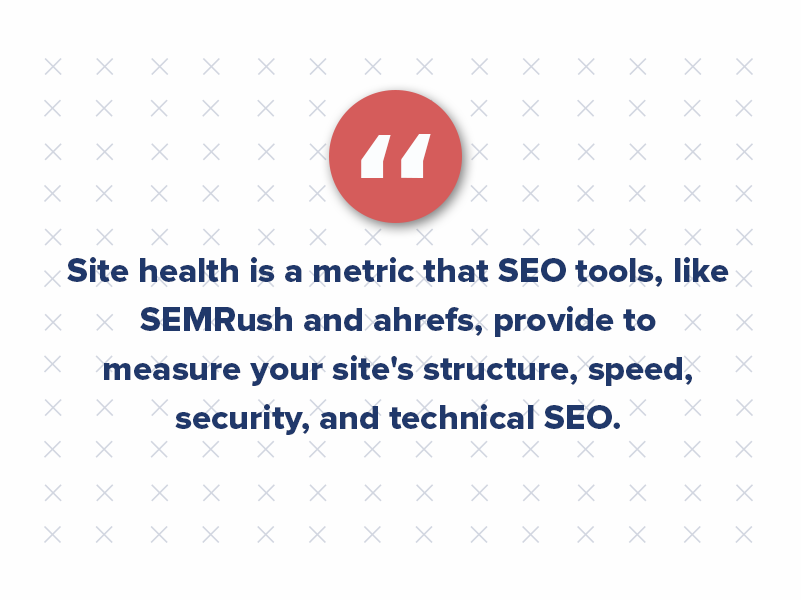
Understanding Site Health Score
The health of a website is determined by various factors, including its speed, responsiveness, and the absence of errors or issues. Semrush’s site health score is an aggregate metric that evaluates your website’s overall performance and user-friendliness, ranking it out of 100. This score is based on the number and severity of on-site issues detected.
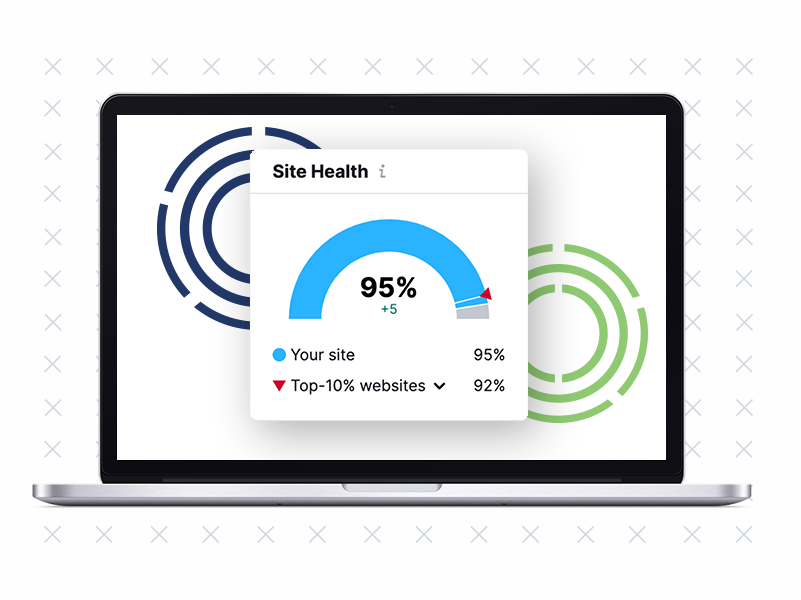
Why Is Site Health Important for SEO?
- User Experience: A healthy multifamily website offers a smoother user experience. Slow-loading pages or broken links can deter users and increase your bounce rate, negatively affecting your SEO ranking.
- Search Engine Crawlers: Google and other search engines prioritize websites that offer a better user experience. If crawlers encounter too many errors on your site, they may index fewer pages.
- Site Speed & Responsiveness: Users and search engines favor a fast-loading and responsive website. Google considers page speed a ranking factor, especially on mobile devices.
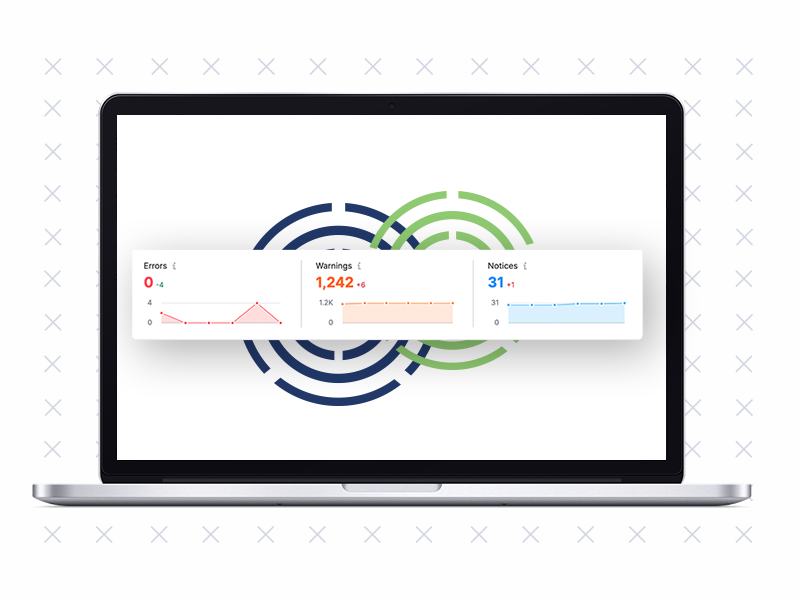
How to Track Your Site Health Score With Semrush
- Dashboard Overview: Log in to Semrush and navigate to the ‘Site Audit’ tool. Here, you’ll find an overview of your website’s health score and a list of issues.
- Issue Tracking: Semrush categorizes issues as Errors, Warnings, and Notices based on their severity. Delving into each category helps identify both major and minor issues that need fixing.
- Prioritize & Address: While fixing all issues is ideal, start with the most severe ones. Tackle errors first, then warnings, and finally, notices.
Tools to Complement Semrush’s Site Health Score
While Semrush offers comprehensive insights, it’s always good to cross-reference using other tools. Here are a few:
- Google PageSpeed Insights: Provides information on page speed and gives optimization suggestions.
- GTmetrix: Analyzes site speed performance using various metrics and offers actionable recommendations.
- Moz Pro: Offers site crawl reports to detect and fix SEO issues.
Tips to Boost Your SEO Traffic With Site Health Optimization
- Regularly Audit Your Site: Regularly schedule site audits to detect and address issues promptly.
- Optimize Images: Large images can slow down your site. Use tools like TinyPNG or Compressor.io to compress images without compromising quality.
- Implement Browser Caching: This reduces the load on your server, making your website load faster.
- Minimize Redirects: Each redirect can slow down the page loading process. Try to keep them to a minimum.
- Optimize CSS & JavaScript: Use tools like CSSNano and UglifyJS to minify your code, improving loading times.
The Bottom Line
The significance of a site health score cannot be understated in the realm of multifamily SEO. With tools like Semrush, tracking and optimizing your site’s health has never been easier. Remember, a healthy website isn’t just about appeasing search engines — it’s about providing your visitors with the best experience possible. And in the vast digital landscape, a positive user experience is paramount to success.
Ready to boost your multifamily SEO traffic through a stellar site health score? Contact Criterion.B today to implement these strategies, and watch as your digital presence thrives!
Pin to Win: Boosting Social Media Marketing and Multifamily SEO One Board at a Time
In today’s digital age, traditional methods of finding multifamily properties, like scouring the classified sections of newspapers or searching through Craigslist, have taken a backseat. The spotlight now is on dynamic and interactive platforms for social media marketing, and Pinterest is leading the charge as an unexpected yet potent tool.
For those still unfamiliar with this platform, Pinterest is much more than just another image-sharing site. It is a powerful repository of visual inspirations and ideas, neatly organized into “Boards.” Unlike many other platforms, it’s a place where users don’t just scroll and like; they engage, plan, and dream. This unique behavior makes Pinterest a compelling channel for social media marketing, particularly for multifamily properties.

Pinterest and Its Influence on Multifamily SEO
For multifamily property marketers, the crux lies in ensuring that your property website ranks high in search engine results. High multifamily SEO ranking translates to increased traffic, more leads, and a bolstered brand reputation. Here’s where Pinterest comes into play, acting as an unexpected booster for multifamily SEO.
Let’s explore how:
1. Setting Up Your Pinterest Profile
Your first step in Pinterest marketing is creating an account representing your business. Use your full business name and ensure that your Pinterest bio gives an immediate sense of who you are, complete with logos and essential contact details. Remember, a Pinterest marketing agency would stress the importance of consistency across platforms.
2. Board Creation and Management
Think of boards as visual chapters of a book. While the temptation is to create many, quality trumps quantity. A handful of well-curated boards can do wonders for your Pinterest marketing strategy.
Categories to consider include:
- Showcasing your property: Highlight rooms, amenities, and events.
- Tips and advice: From interior decoration ideas to space-saving hacks.
- Local guides: Offer insights into the neighborhood and local attractions.
- Lifestyle: Share easy recipes or DIYs for apartment living.
3. Harnessing Multifamily SEO
Keywords are the pillars of any SEO strategy, and Pinterest marketing is no different. Integrate relevant multifamily SEO keywords into your Pins’ titles and descriptions. This ensures search engines recognize the relevancy of your Pins, propelling them (and your property) to a wider audience.

4. Steering Potential Renters Your Way
Every Pin should serve a purpose, and in the case of multifamily properties, it guides interested parties back to your main website. Edit the source link of your Pin to ensure it leads back to your site. An engaging caption can further tempt users to make that all-important click.
Bringing Pinterest Into Your Social Media Marketing Fold
With its visually-driven platform and engaged user base, Pinterest offers multifamily properties a unique avenue for social media marketing. Collaborating with a Pinterest marketing agency can further refine your strategy, ensuring you harness the platform’s full potential.
As the digital landscape evolves, staying adaptive and innovative is vital. And, in the realm of social media marketing, Pinterest might just be the secret ingredient you’ve been looking for to elevate your multifamily SEO. So, why wait? Dive in and pin your way to success!
14 Google Business Strategies for Effective Multifamily SEO
In the ever-evolving world of multifamily marketing, ensuring a strong digital presence isn’t just beneficial — it’s essential.
With the growing importance of search engine optimization (SEO) in multifamily properties, one cannot overlook the power of the Google Business Profile.
Here’s how to supercharge your multifamily SEO using this game-changing tool.
Understanding Google Business Profile’s Origin
Google Business Profile is the offspring of the erstwhile Google Places and Google+Local Pages, which were map-based and social platforms, respectively. By bringing these two together, Google offers a user-friendly platform packed with features, ensuring a multifaceted boost for multifamily SEO.
Google Business Profile By the Numbers
From analyzing engagement metrics to understanding their effects on local search positions, these numbers craft a narrative that can shape your digital approach.
- 84% of business-related searches are exploratory, with a mere 16% being specific searches.
- About one-third of local enterprises appear in over 1,000 exploratory searches monthly.
- 56% of user interactions with Google Business listings result in visits to the company’s website.
- 64% of customers turn to Google to obtain contact information for local enterprises.
- During weekdays, 94% of calls to these local businesses are initiated from Google.
- On average, a business gets noticed in more than 1,000 monthly searches through this platform.

14 Must-Know Multifamily SEO Facts and Tips
- Spotlight on Maps: Having a Google Business Profile is like planting a flag on the digital map. It allows your property to shine on Google Maps, displaying key details such as the property name, contact details, and valuable user reviews.
- Consistent Updates are Key: Ensure that the information on your profile is up-to-date. An outdated phone number or address can turn potential renters away in frustration.
- Multiple Platforms, One Profile: Google Business Profile ensures your property’s visibility across various platforms — Google Search, Maps, and the former Google+. A digital trifecta, this increases your multifamily SEO strength.
- Transition Note: If you had a Google Places account, Google automatically moved you to a Google Business Profile. But remember to check and refresh your information periodically.
- The Social Edge with Google+: With the integration of Google+, your property can now organize virtual hangouts, curate content for specific circles, and share updates, enhancing multifamily SEO.
- Community Engagement: Use Google+ to share local events or news about your property. Google then indexes this content, making it discoverable in relevant search queries.
- Interactive Customer Care: Google+ also lets customers leave reviews and ask questions. Engaging with this feedback boosts your online reputation and displays a commitment to the community.
- First Impressions Matter: Ensure you have a captivating cover photo and a completed profile to capture interest at first glance.
- SEO Footprint Expansion: Every time your property appears on a Google page, your multifamily SEO footprint grows, enhancing your online visibility and attractiveness to potential renters.
- Staying Current: Regularly update your information. Fresh and accurate content is a cornerstone of successful multifamily marketing.
- Claim Your Space: Verifying your Google Business Profile is simple but crucial. Claim and verify your account to fully harness its multifamily SEO potential.
- Increased Engagement: Google+ features help you connect with individuals and businesses of similar interests, broadening your community and engagement.
- Maximizing SEO Impact: As you consistently update and engage on your Google Business Profile, Google rewards you with better search result placements, optimizing your multifamily SEO efforts.
- Forge Ahead in the Digital Landscape: Embracing the multifaceted features of Google Business Profile positions your property for success in the digital age.
The digital realm offers myriad opportunities, and with tools like Google Business Profile, multifamily properties can significantly enhance their online presence and multifamily SEO.
Ready to dive deeper and fully unlock the potential of your online strategy? Criterion.B’s expertise can guide the way. Connect with us, and let’s elevate your multifamily marketing game!


